Lucerne - Transportation Museum - Day 16
|
|
Today Lynnette and I headed over to the Swiss Transport Museum which I thought was extremely well done. The museum was basically divided into four halls -- railroads, boats, cars and airplanes -- surrounding an open area. Can you guess which hall I liked most? Actually, I liked all of them.
We started with the railroad hall. Here is a steam engine locomotive cutaway so you can see how it works. The last few years I've been interested in railroads since they were a huge part of the industrial revolution.
|
| |
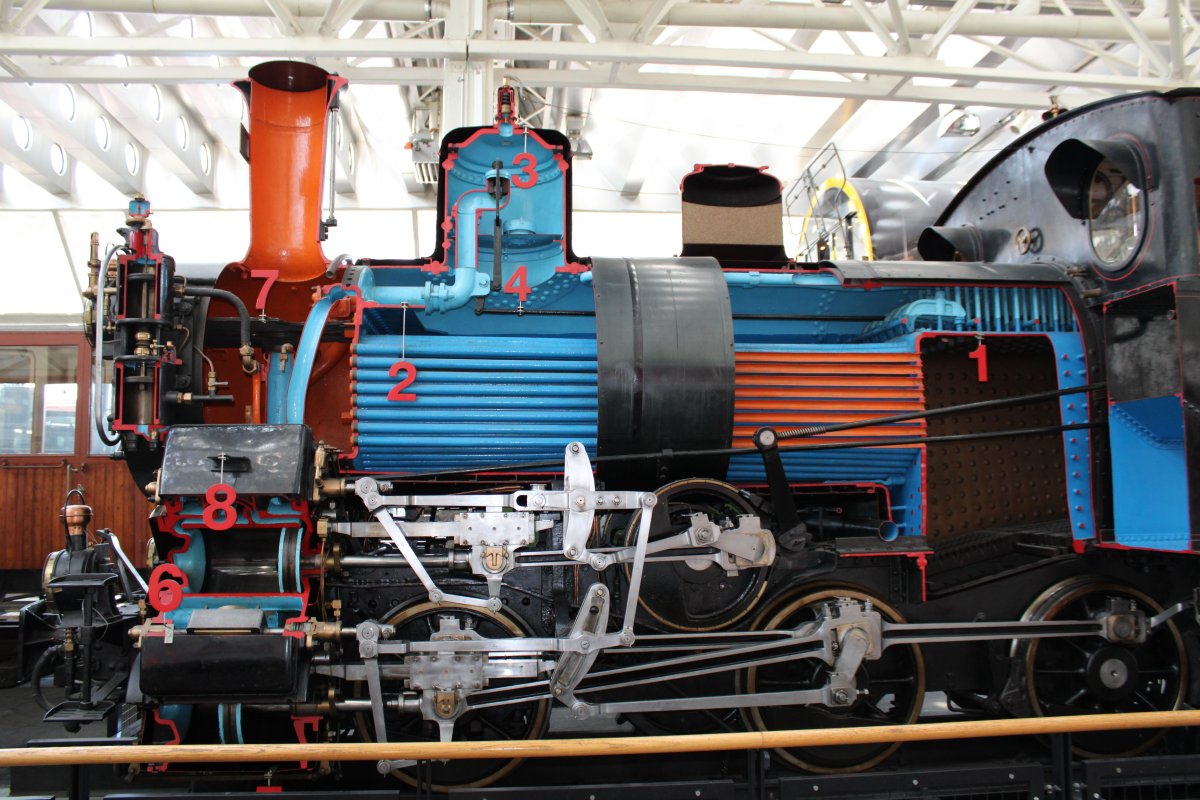 |
|
|
An actual cogwheel train where you could really see how the thing was able to climb up a 48% grade. This steam powered railcar #9 was in service on Mount Pilatus until 1937.
|
| |
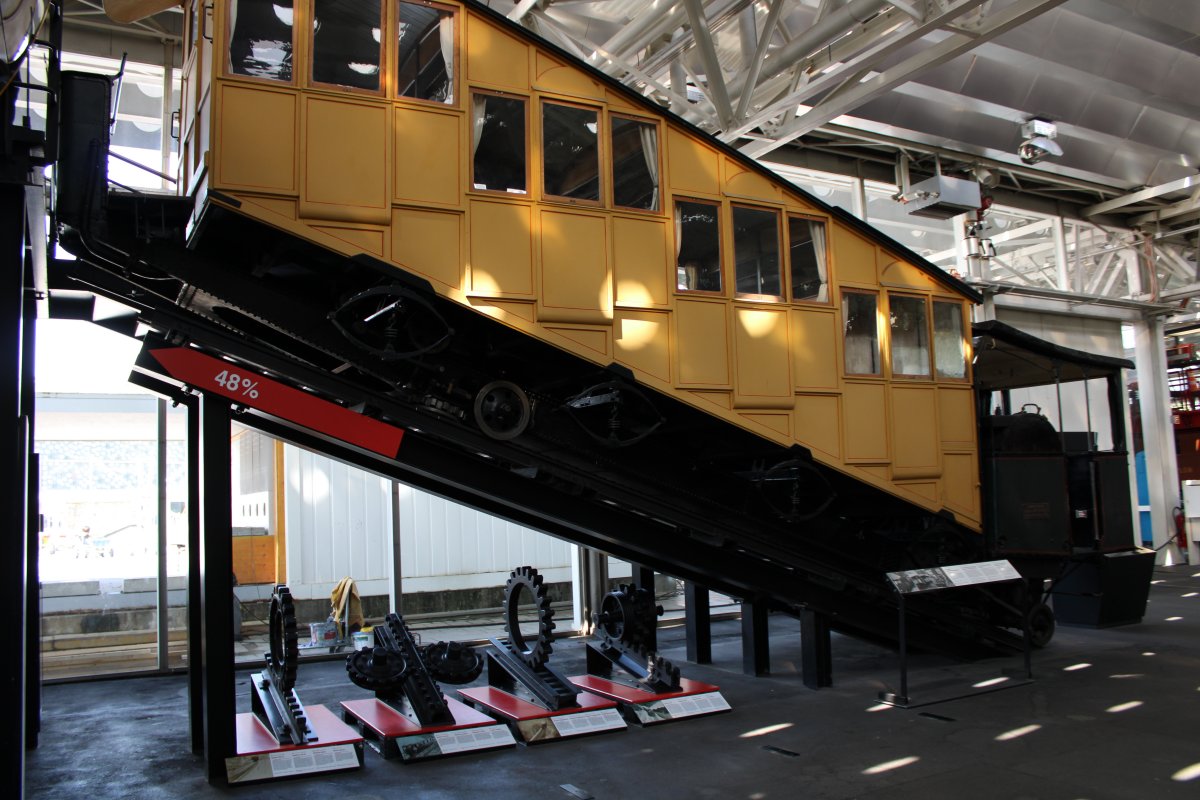 |
|
|
This might have been the most impressive thing of all to me. It's a diagram of the Gotthard Base Tunnel which is a railway tunnel through [under] the Swiss Alps. The official start of construction began in November 1999. It was completed and full service began in December 2016. With a route length of 35.5 miles, it is the world's longest railway tunnel, the world's deepest traffic tunnel, and the first flat, low-level route through the Alps. The diagram gives you an idea of how much mountain is on top of the tunnel and how long the tunnel is. At one point the tunnel is 8,040 feet under the top of the mountain above it! The engineering skill required to design and build a tunnel like this is mind-boggling.
Between 130 and 160 trains on an average working day operate through the Gotthard Base Tunnel, which in March 2019 marked the 100,000th transit. Around two-thirds of the passages are freight trains and the remaining quota are passenger trains, both national and international.
|
| |
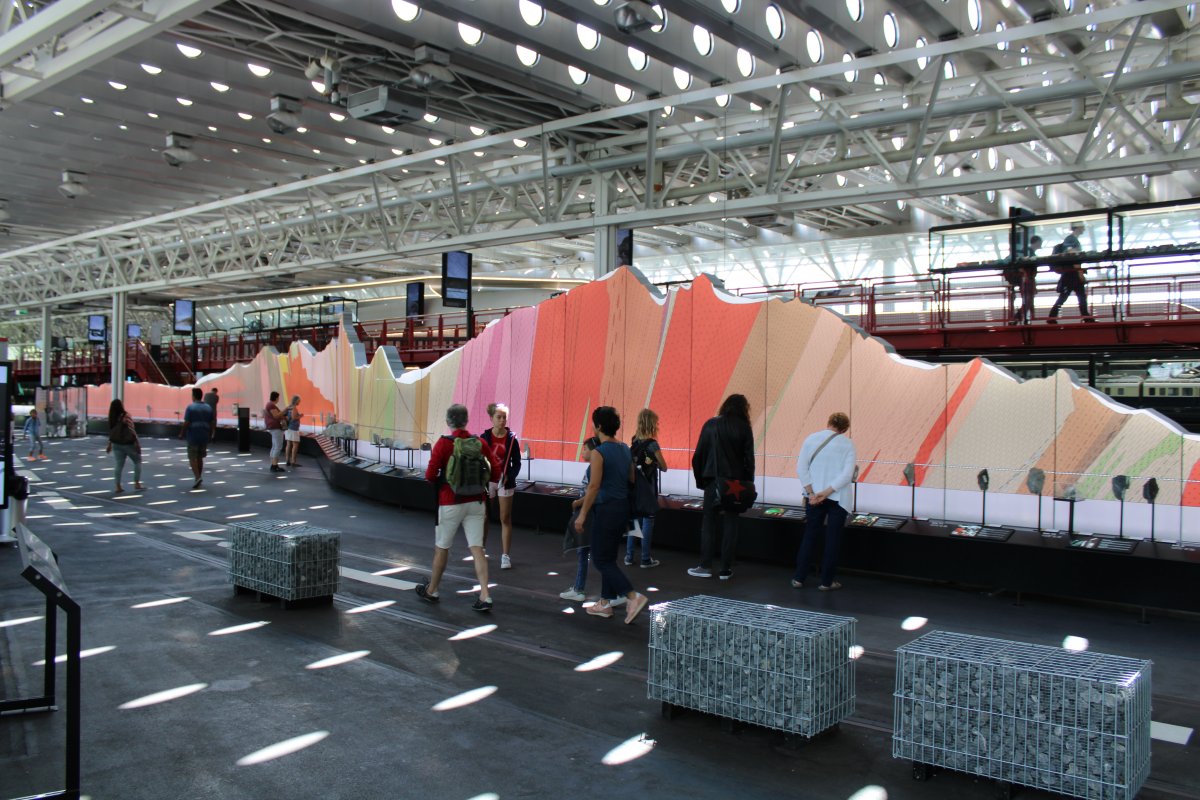 |
|
|
An 1890 snowplow train for clearing the tracks over the Gotthard Pass.
|
| |
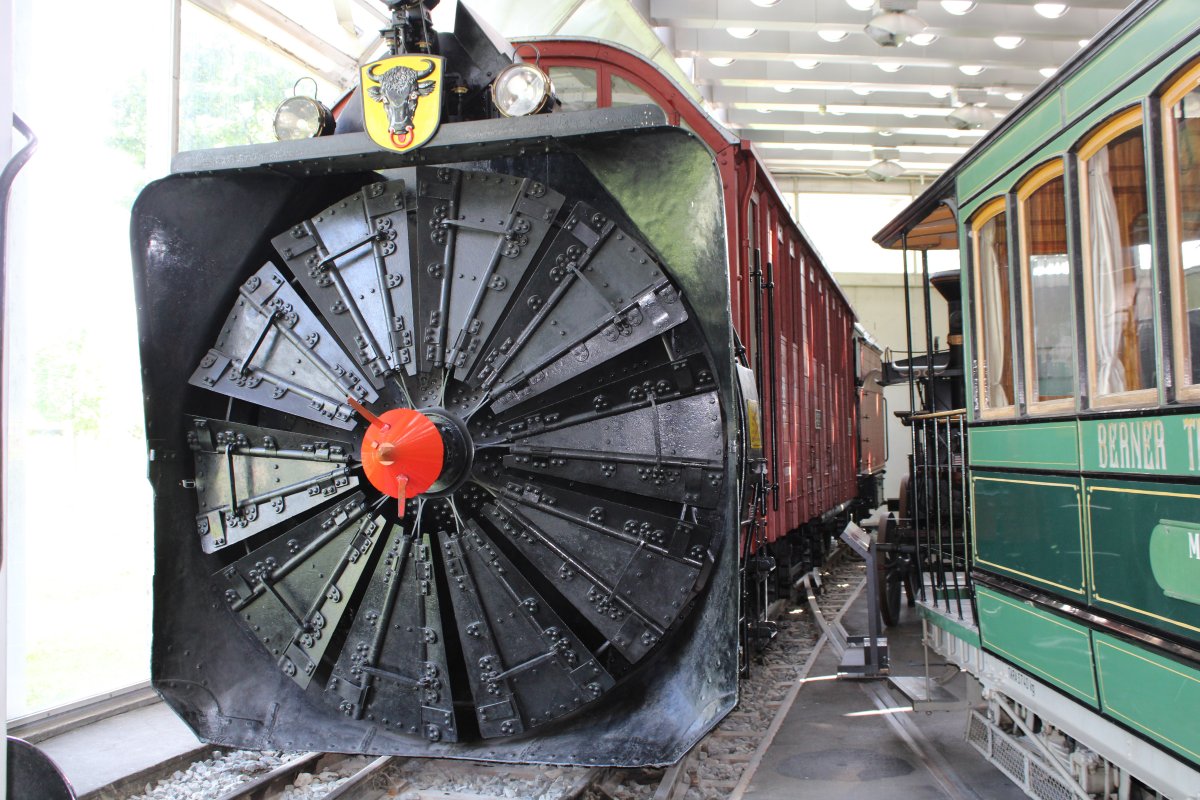 |
|
| Switzerland has a rich railroad history and this museum does a great job of telling their story. |
| |
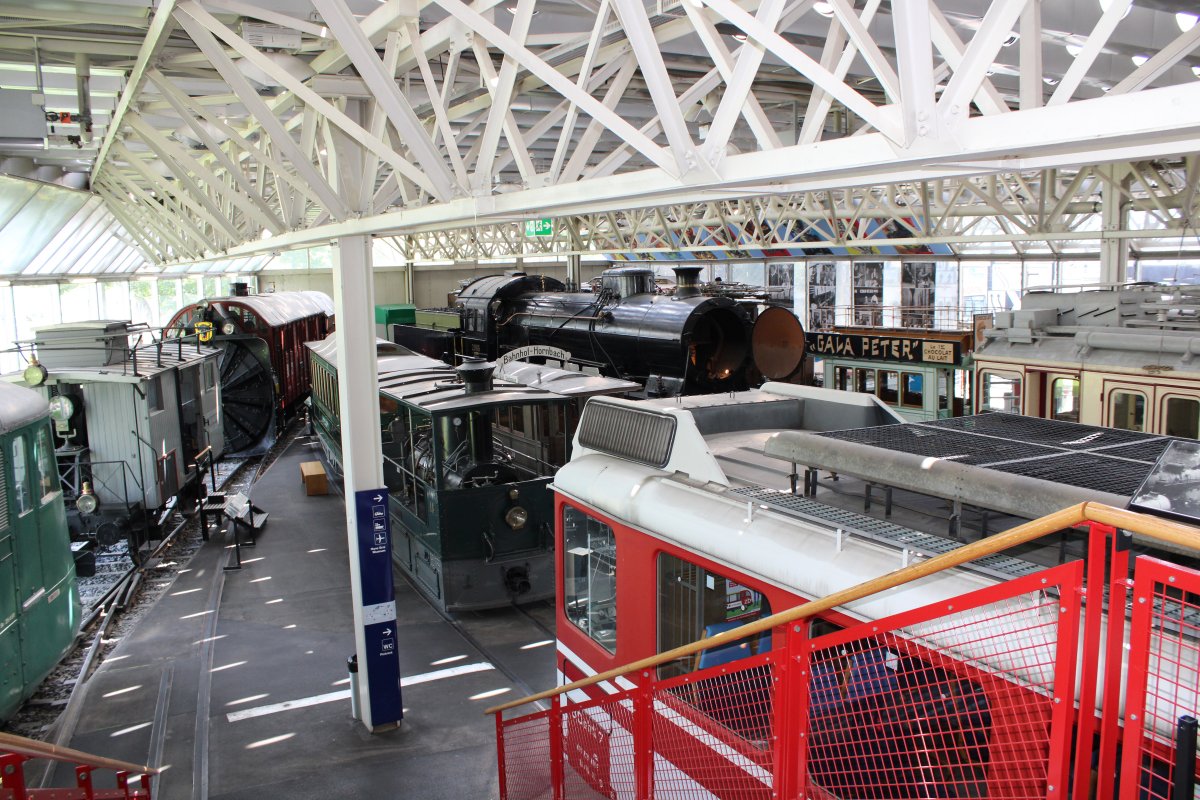 |
|
| |
| |
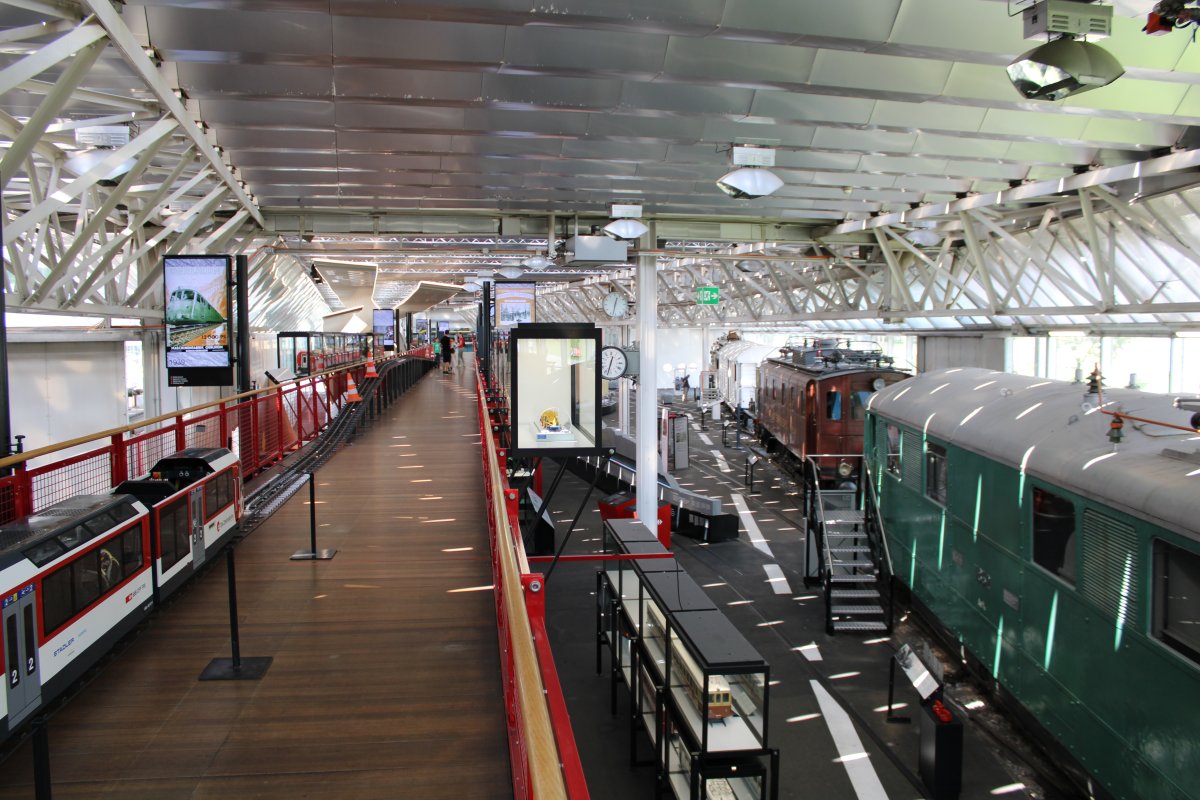 |
|
| We moved to the car hall. The main thing here was this wall stacked floor to ceiling with 80 or so vehicles. That yellow thing on the left could retrieve a car and place it in a display area. |
| |
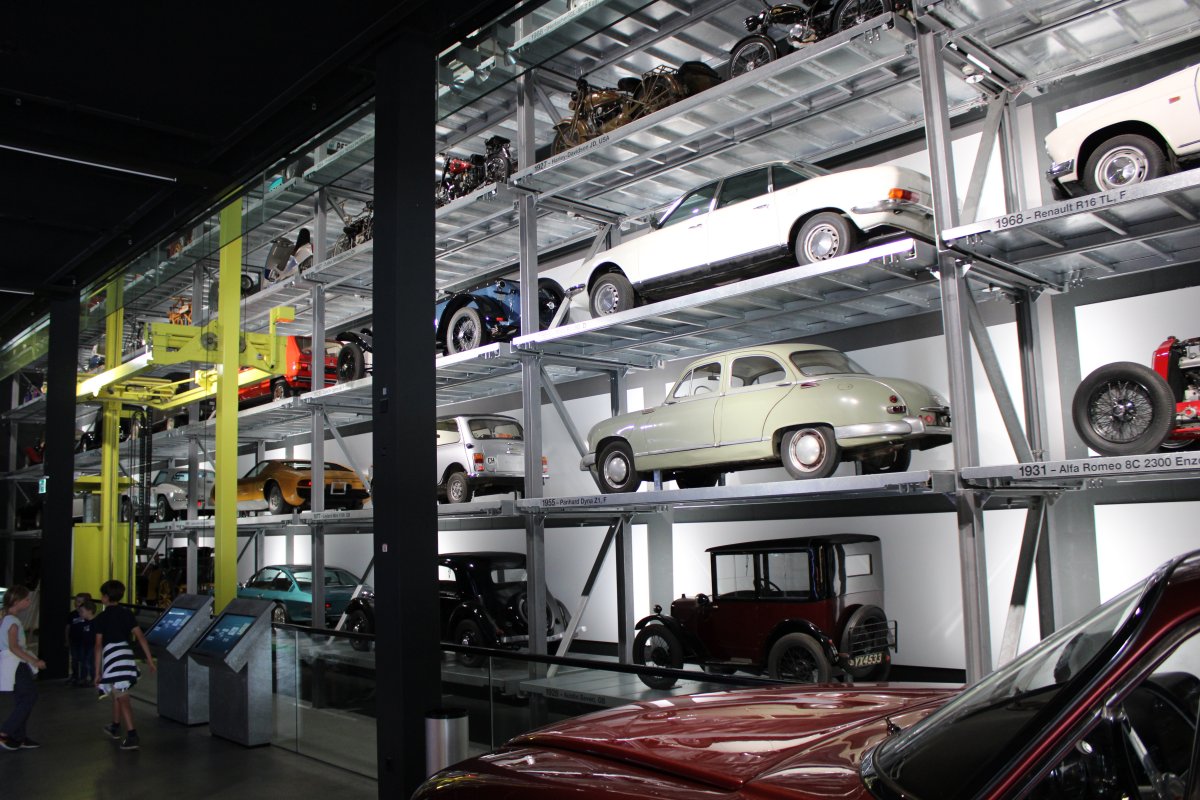 |
|
|
The first car in the world! The Benz Patent-Motorwagen is widely regarded as the world's first production automobile. Invented by Karl Benz, about 25 of the motorized tricycles were built between 1886 and 1893. It had a four-stroke internal combustion engine delivering point eight horsepower. It had a speed of 11 mph. This is a replica.
Karl Benz -- and also Gottlieb Daimler -- would go on to play a huge part in the creation of the motor car industry. The two never met. Karl Benz died in 1929, but not before the firm he founded had merged in 1926 with Daimler, a union which would create that most celebrated of motor car manufacturers, Mercedes-Benz.
|
| |
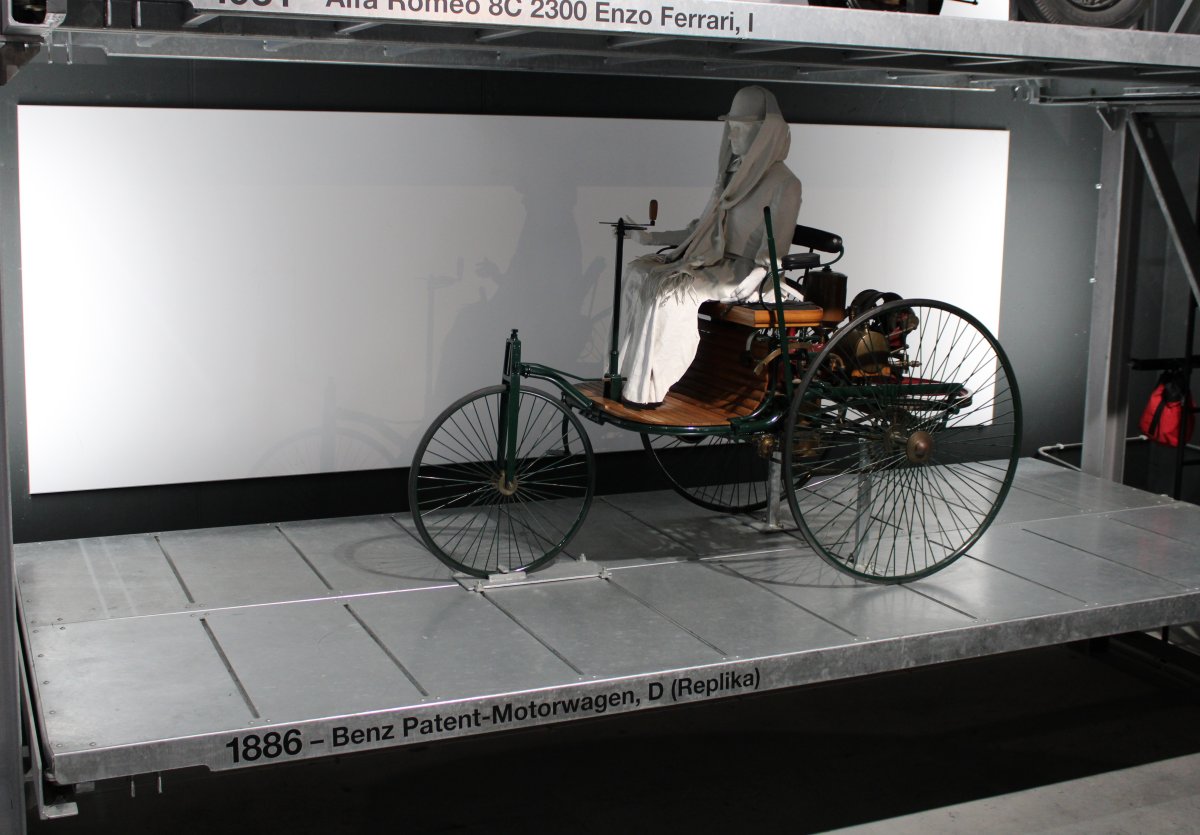 |
|
| The device retrieving a race car from the wall (or is it returning it?). |
| |
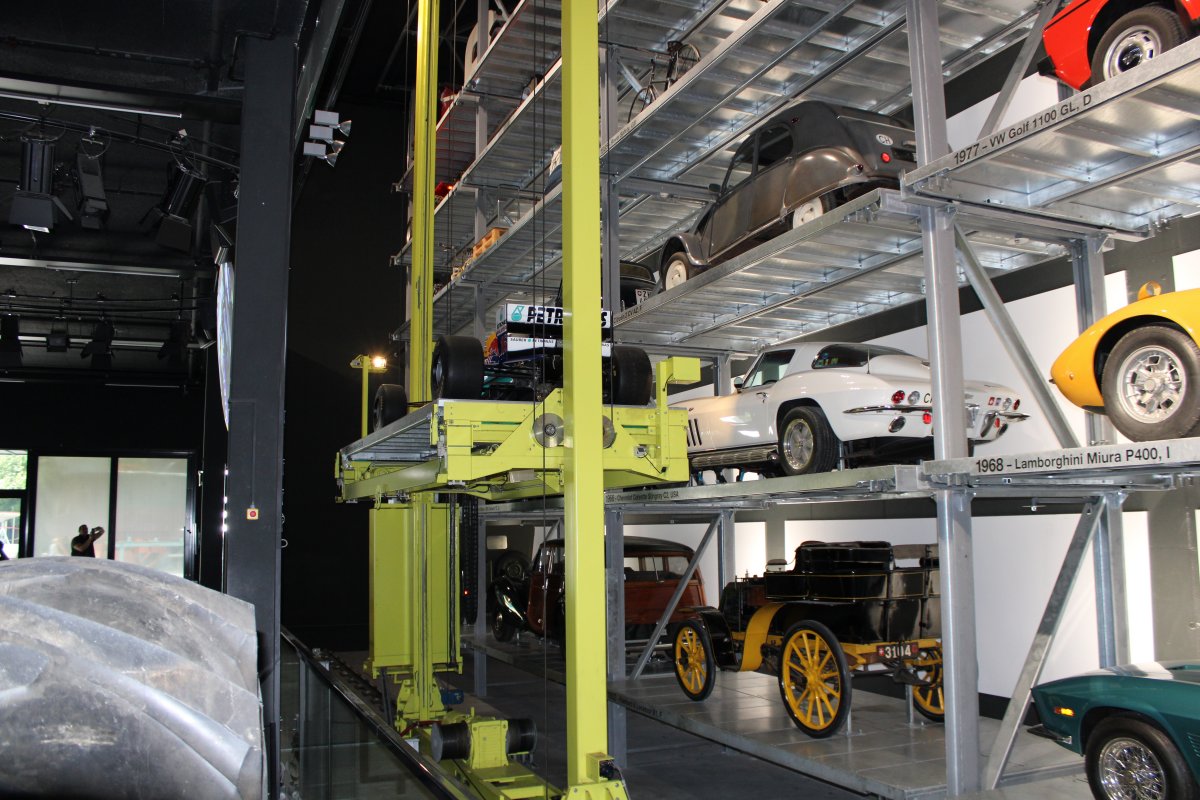 |
|
|
Nice 68 Lambo.
|
| |
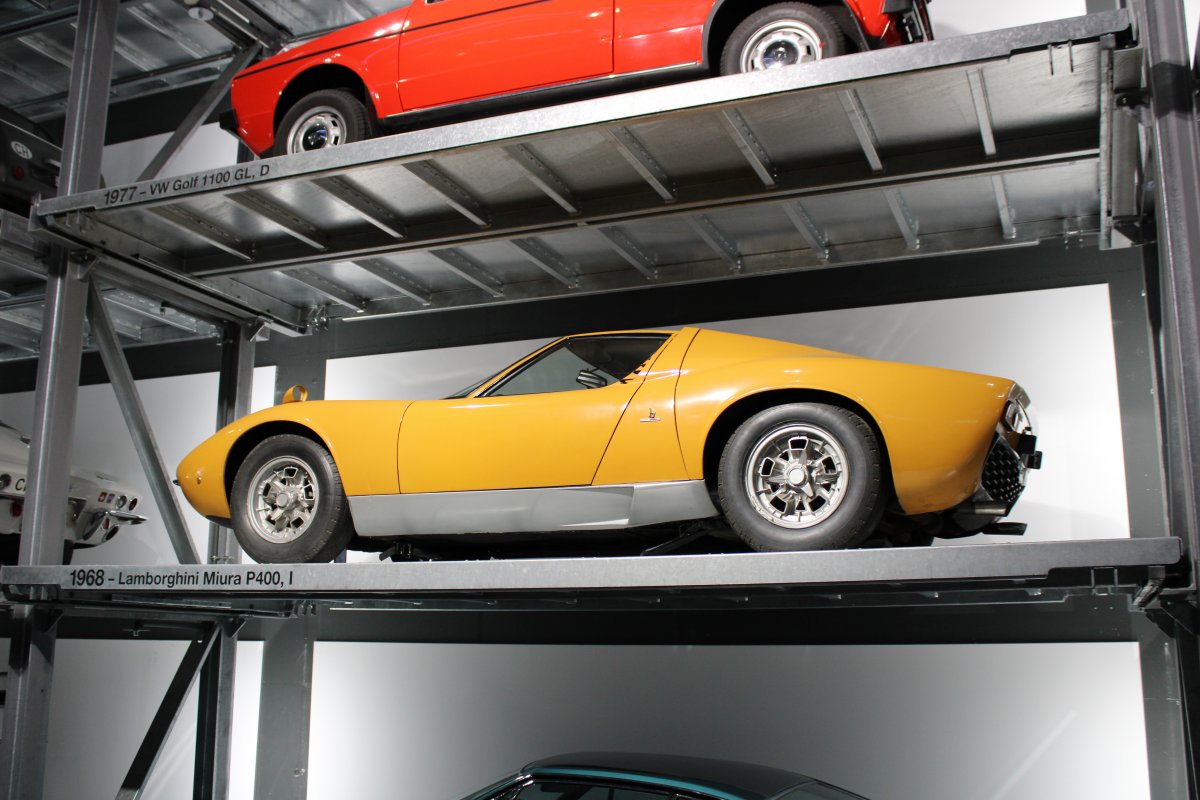 |
|
| 72 Ferrari. |
| |
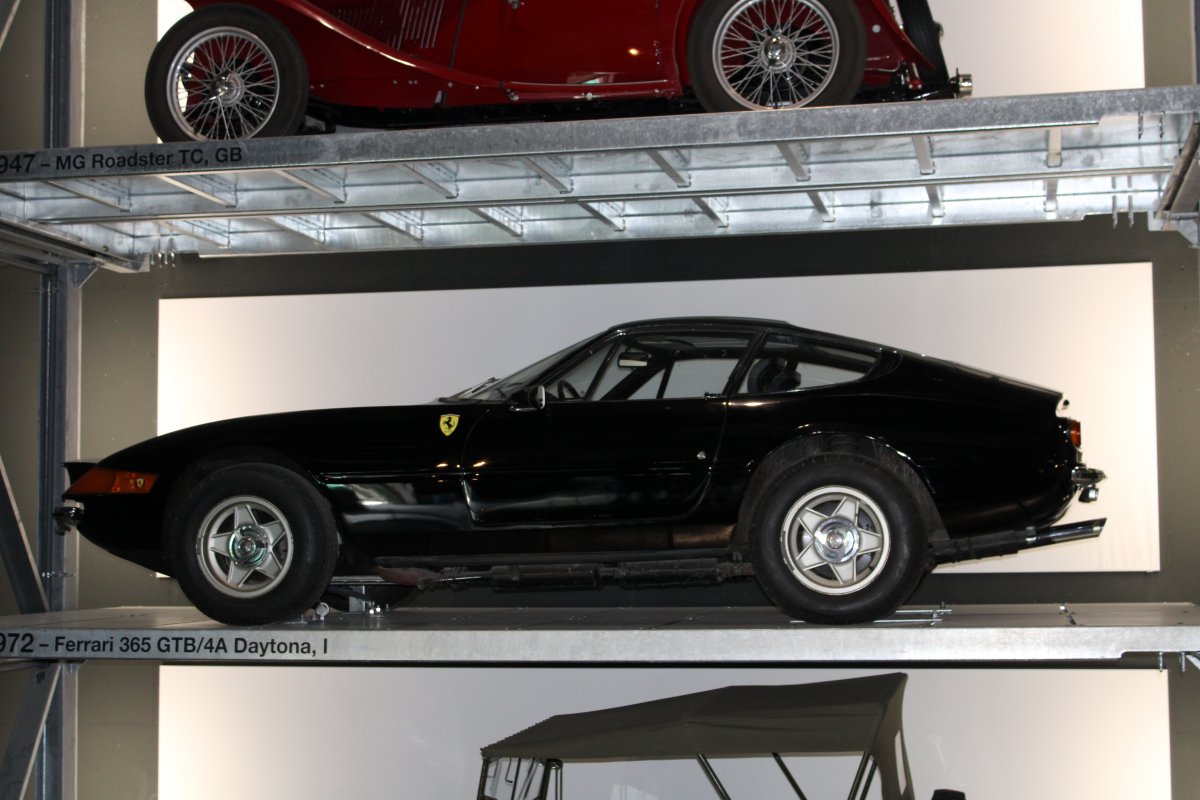 |
|
| A race car in the display area. Visiters could vote on which car to see, and then the automatic mechanism would go fetch the car. |
| |
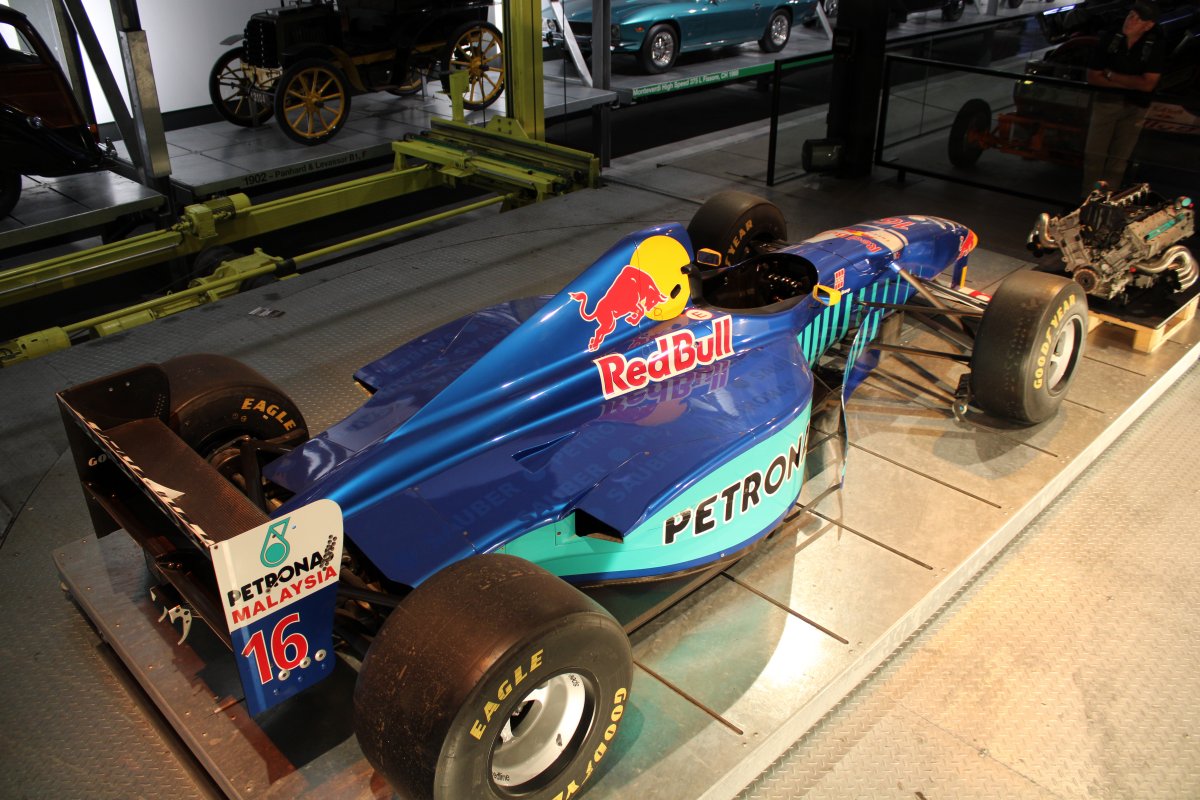 |
|
|
My parents used to have one of these: an MG. This is the same color as theirs, although this is a 47 and they had a '52.
|
| |
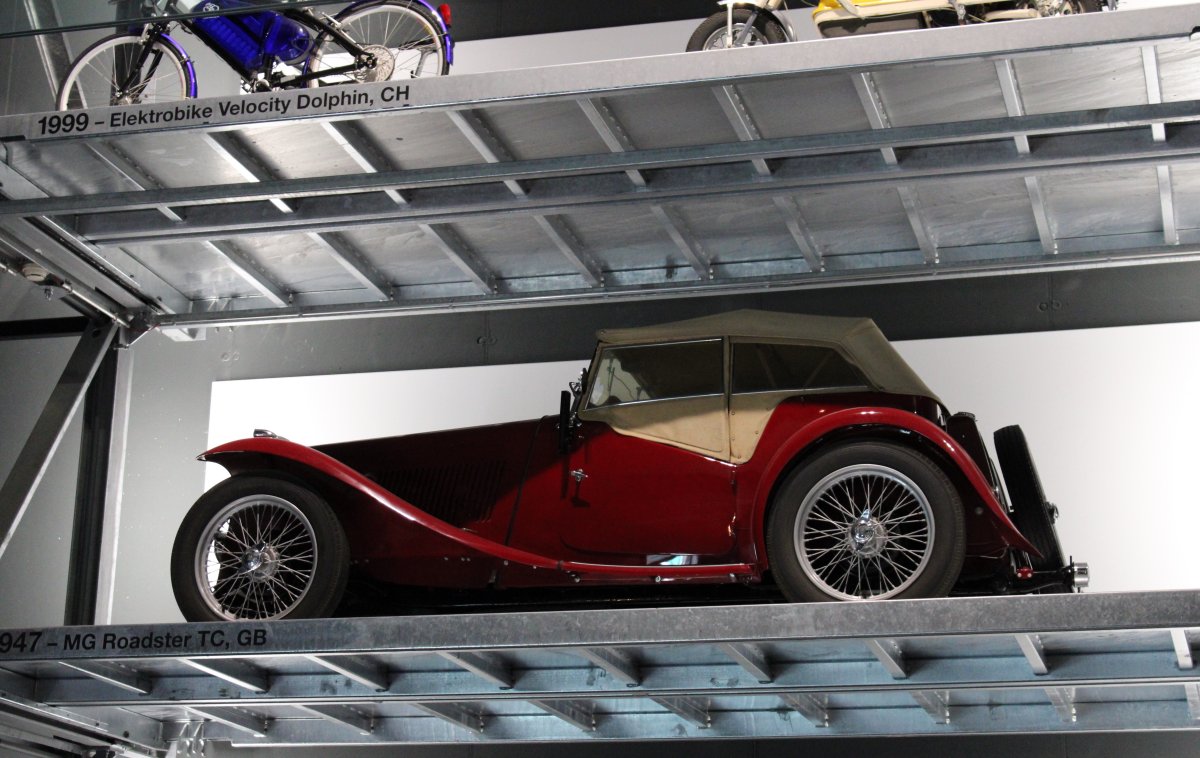 |
|
| Glad to see the museum has a classic Americancar: a '66 Vette. |
| |
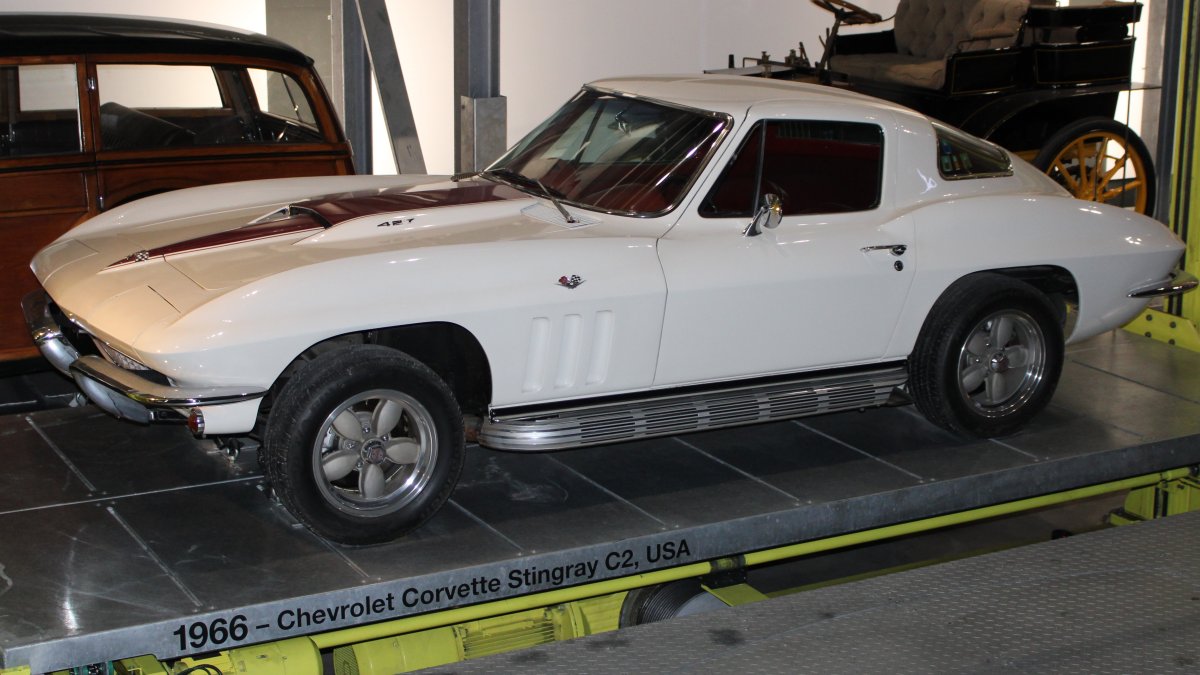 |
|
|
But Lynnette preferred an old fashioned bike.
|
| |
 |
|
| Classy Aston Martin GB4 GTZ in British racing green colors. Only 19 models were produced between 1960 and 1963. |
| |
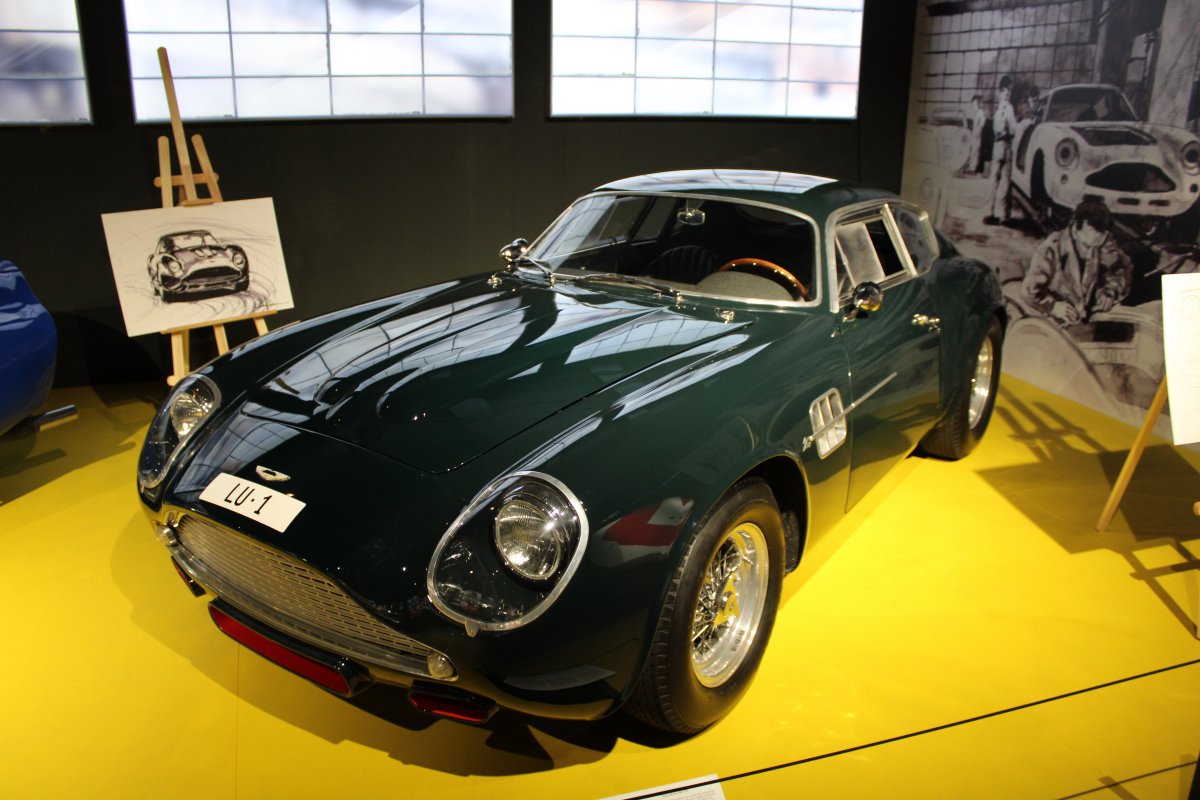 |
|
|
At the height of the Roman empire, it's road network almost 50,000 miles across Europe. The roads were usually surfaced with stones or gravel and were useable throughout the year and it all weather. The Roman empire was the first civilization to have a road network like this and it wasn't until the early 19th century that the British developed another excellent road system, primarily thanks to John McAdam.
Switzerland has many of what are known as "dream roads" through alpine passes or along lakes. "Their fascination consists in the combination of fast and slow bends, the vertical scenery, the breathtaking panoramic views, and the steep ascents and descents. Driving, riding or cycling along these roads is for many an unforgettable experience."
|
| |
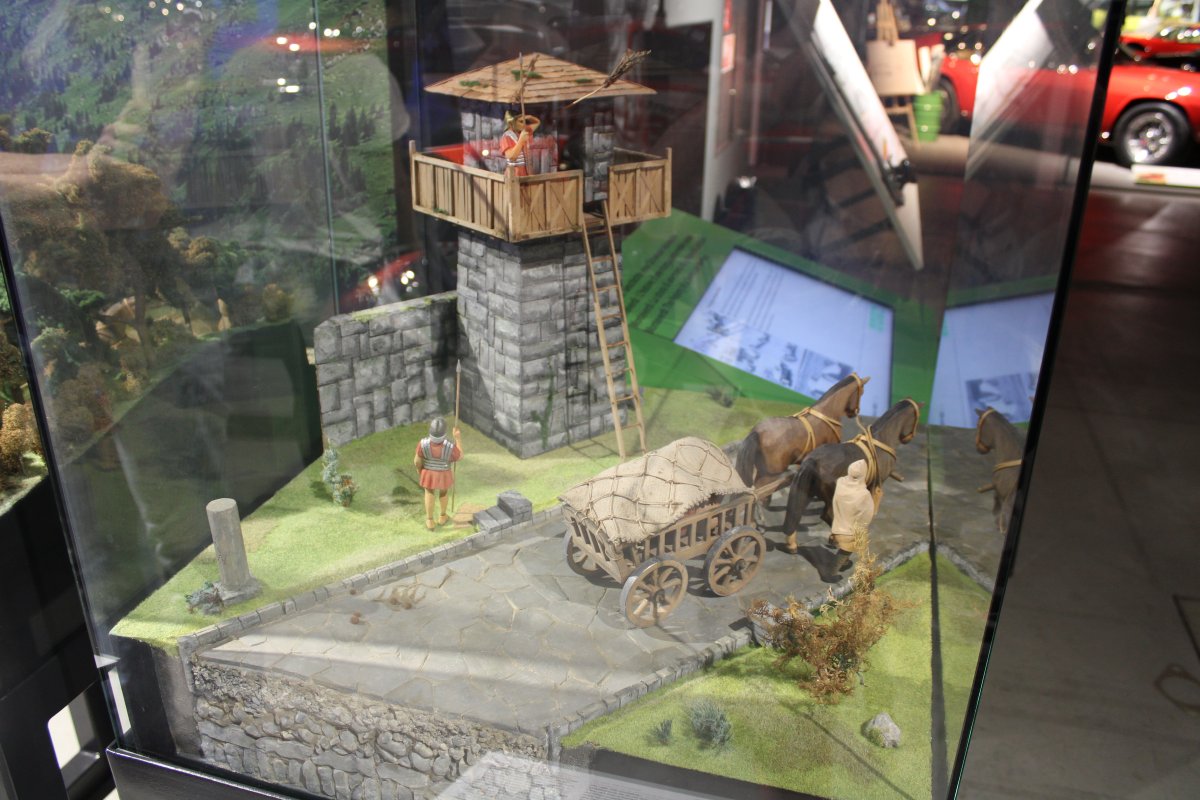 |
|
| Outside in the central area was a bunch of stuff including this F-104 Starfighter. |
| |
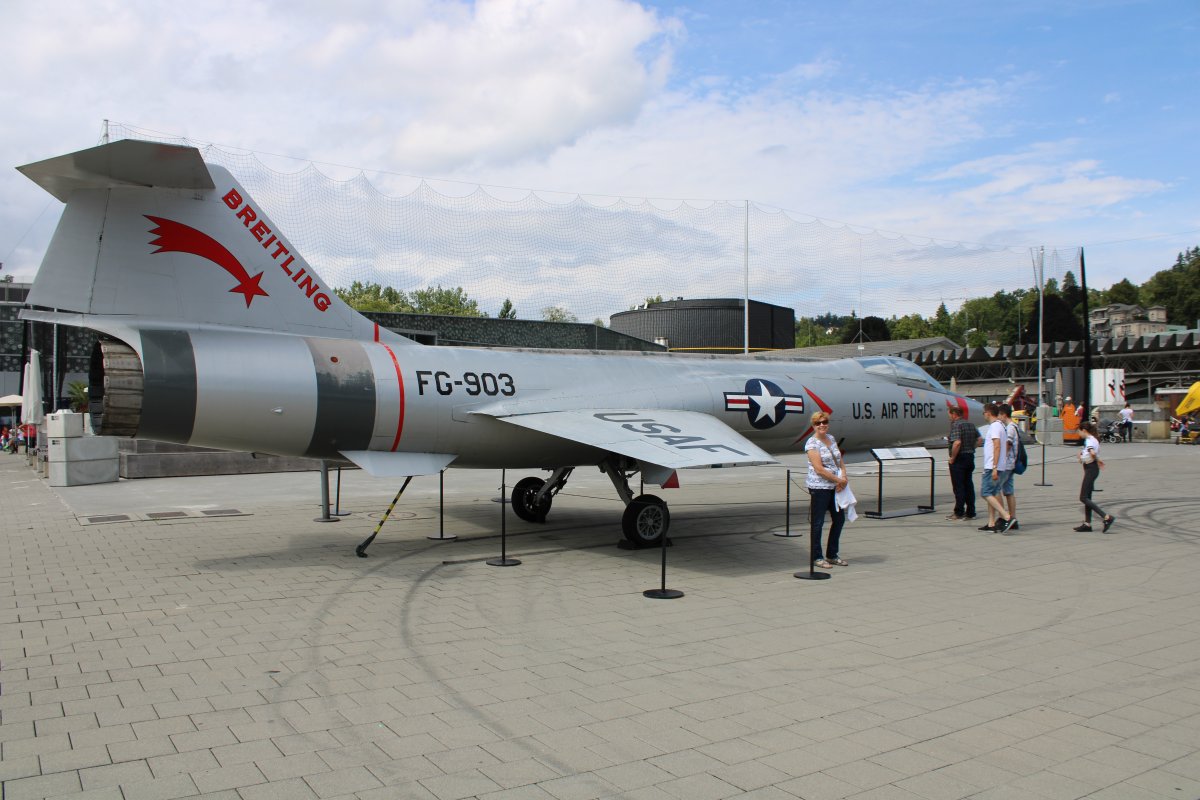 |
|
A Convair 990 Coronado flown by Swissair Airlines. The 990 was produced by the Convair division of General Dynamics, a stretched version of their earlier Convair 880. It carried fewer passengers than its competitors the Boeing 707 or Douglas DC-8, although the 990 was 25–35 mph faster than either in cruise. Only 37 were built, but Swissair was one of the primary operators.
On April 12, 1973 a U.S. Navy Lockheed P-3C operating from NAS Moffett Field in Sunnyvale, California collided with a NASA Convair 990 during approach to runway 32R. The aircraft crashed on the Sunnyvale Municipal Golf Course, half a mile short of the runway, resulting in the destruction of both aircraft and the deaths of all aboard except for one Navy crewman.
|
| |
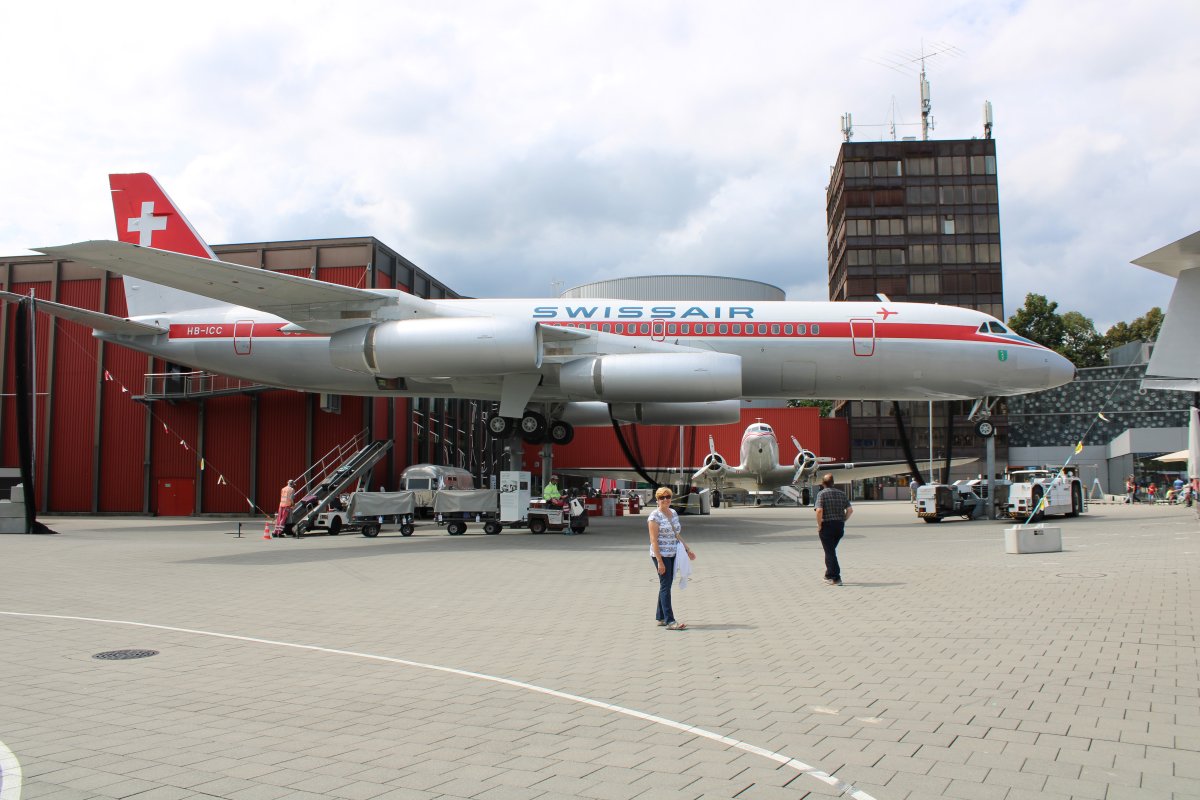 |
|
| There was this big construction playground for the kids with lots of hands-on. |
| |
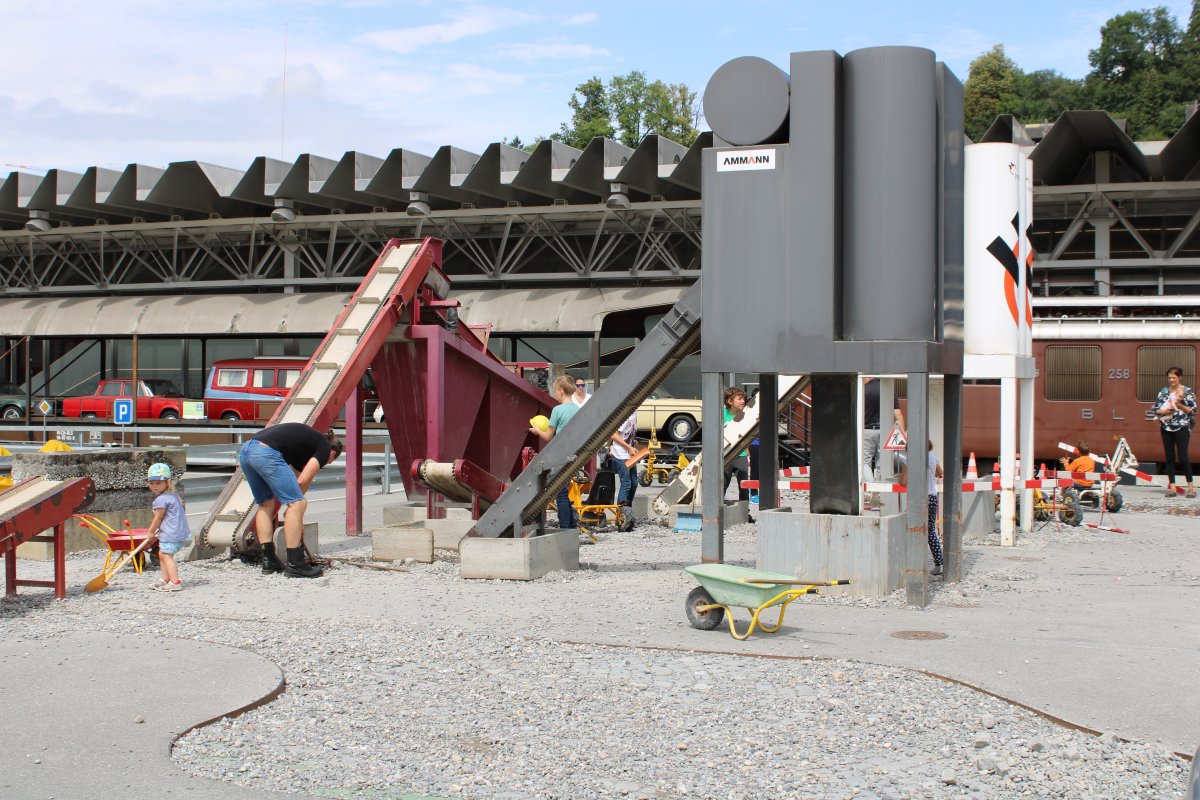 |
|
|
A Cessna 185 on floats. This particular aircraft operated in Borneo providing humanitarian services to severly isolated villages along seven major rivers. In harsh terrain covered by jungle, it would take four days to get someone to a hospital. But it could be done in this plane -- affectionately called Mike Charlie Brown -- it could be done in an hour.
|
| |
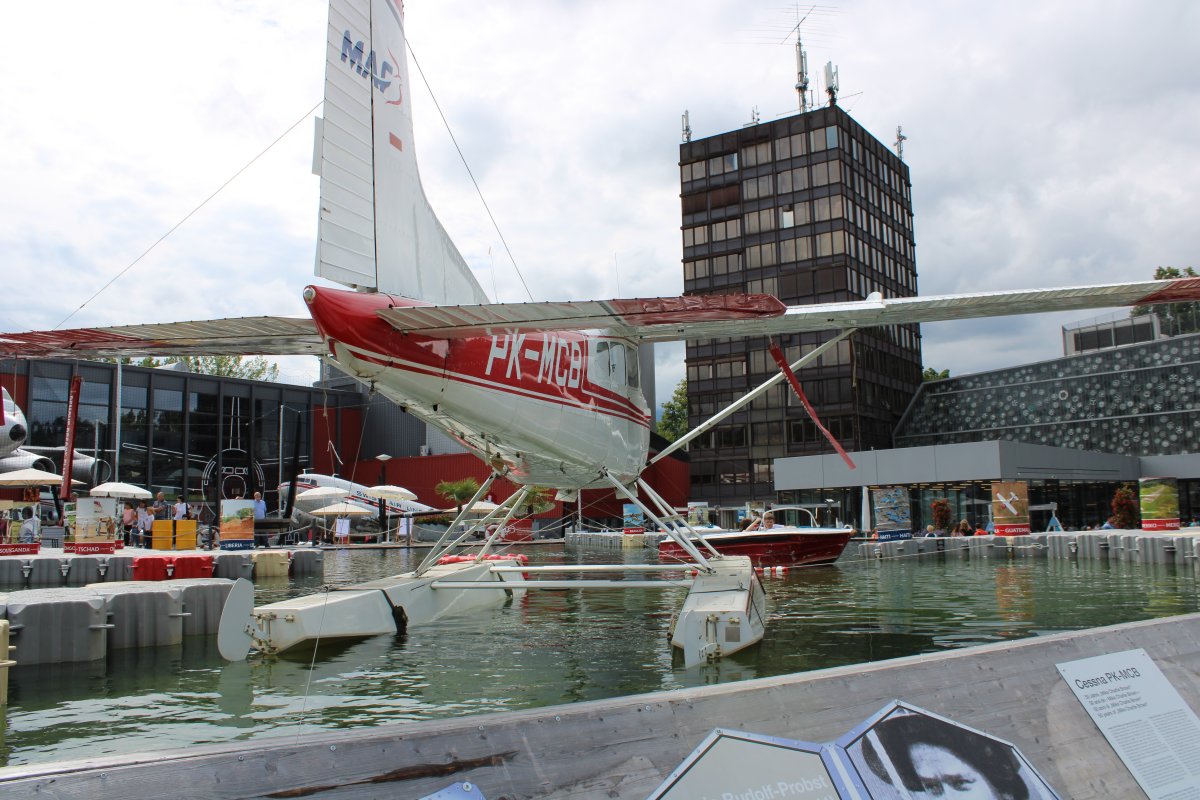 |
|
| Immaculate DC-3. |
| |
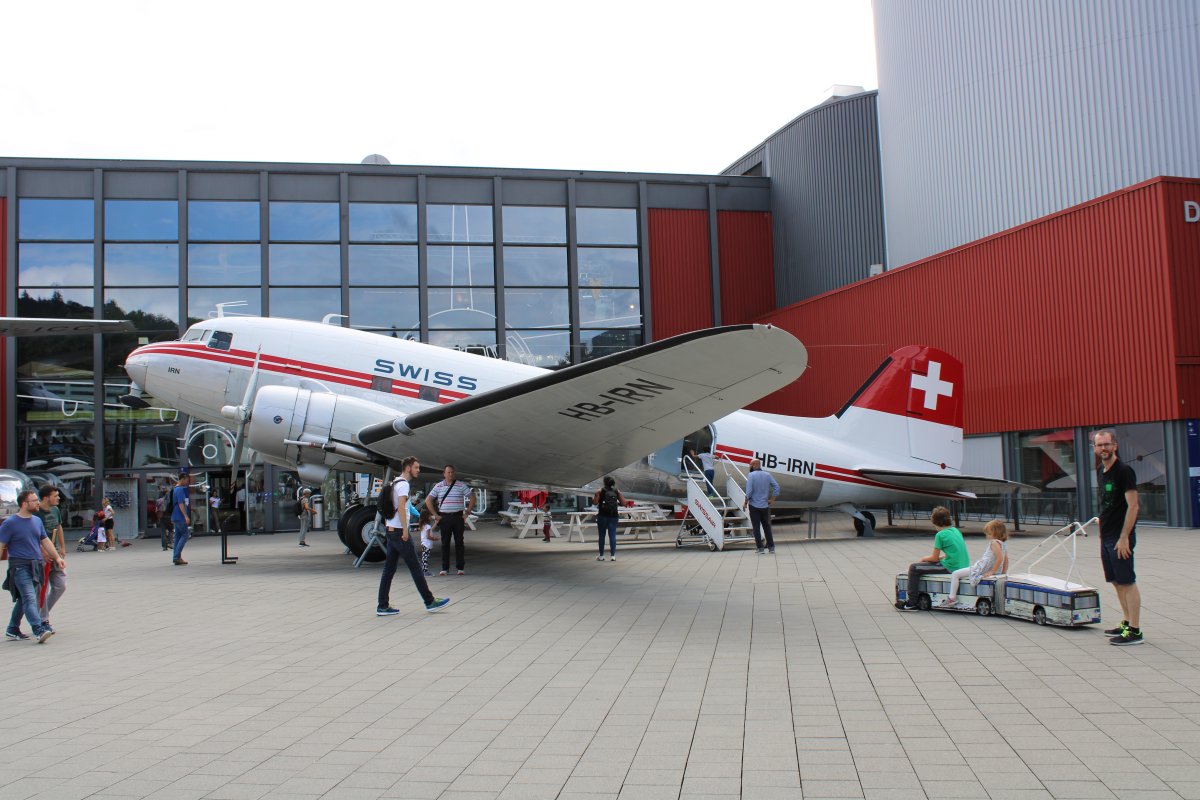 |
|
|
The 1863 steamship "Rigi" which carried passengers over Lake Lucerne. It is the oldest surviving flush-deck side-wheel paddle steamer in the world.
|
| |
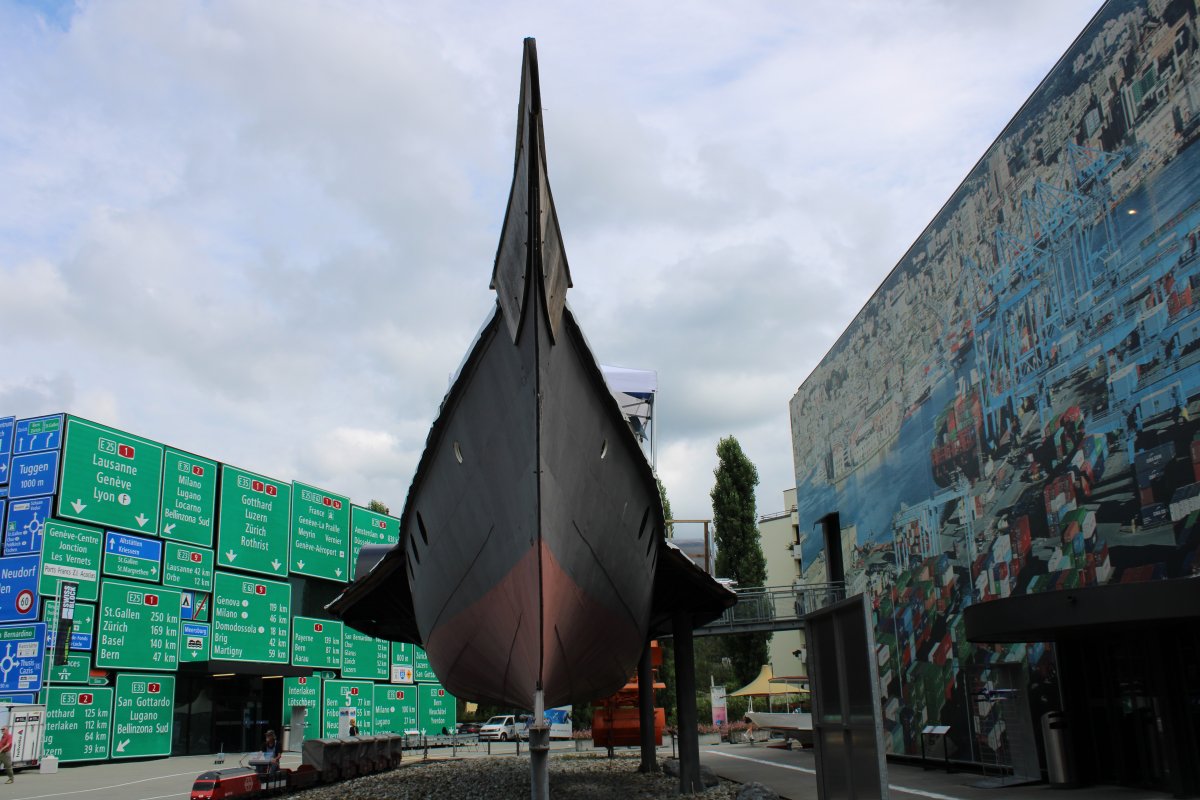 |
|
| Moving to the Boat hall, an elaborately rigged model of the HMS Victory, Nelson's flagship at Trafalgar. Lynnette and I toured the actual HMS Victory last year: Link. |
| |
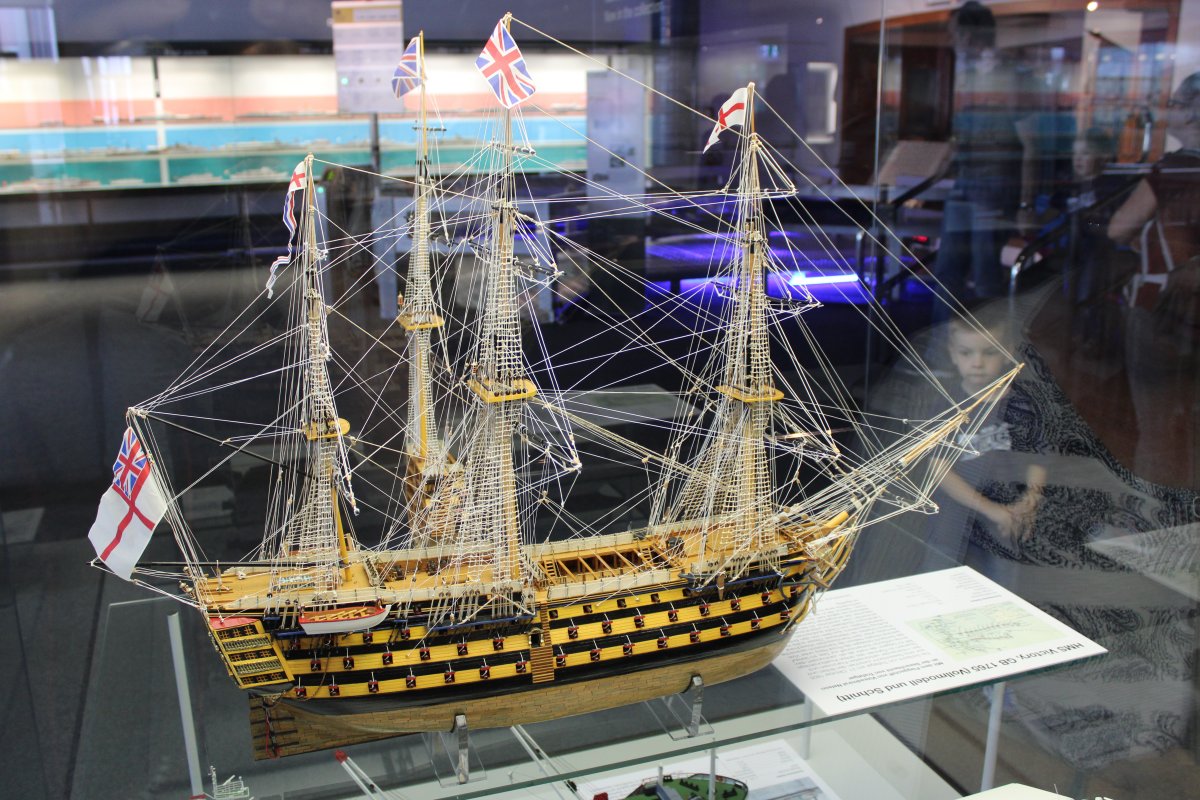 |
|
| HMS Victory from head on. |
| |
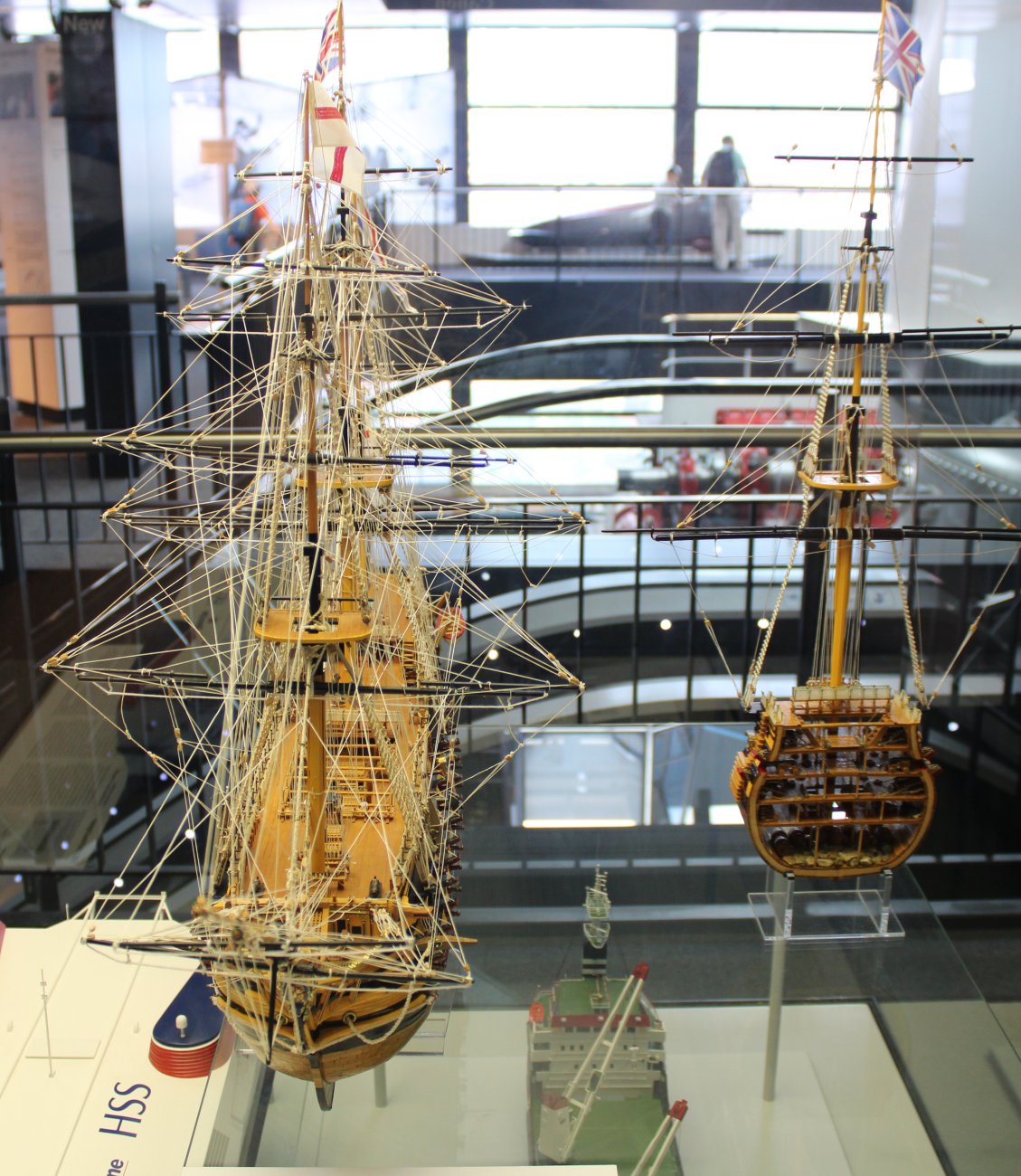 |
|
| A working model of a Rhine River lock, complete with moving doors and rising/falling water. |
| |
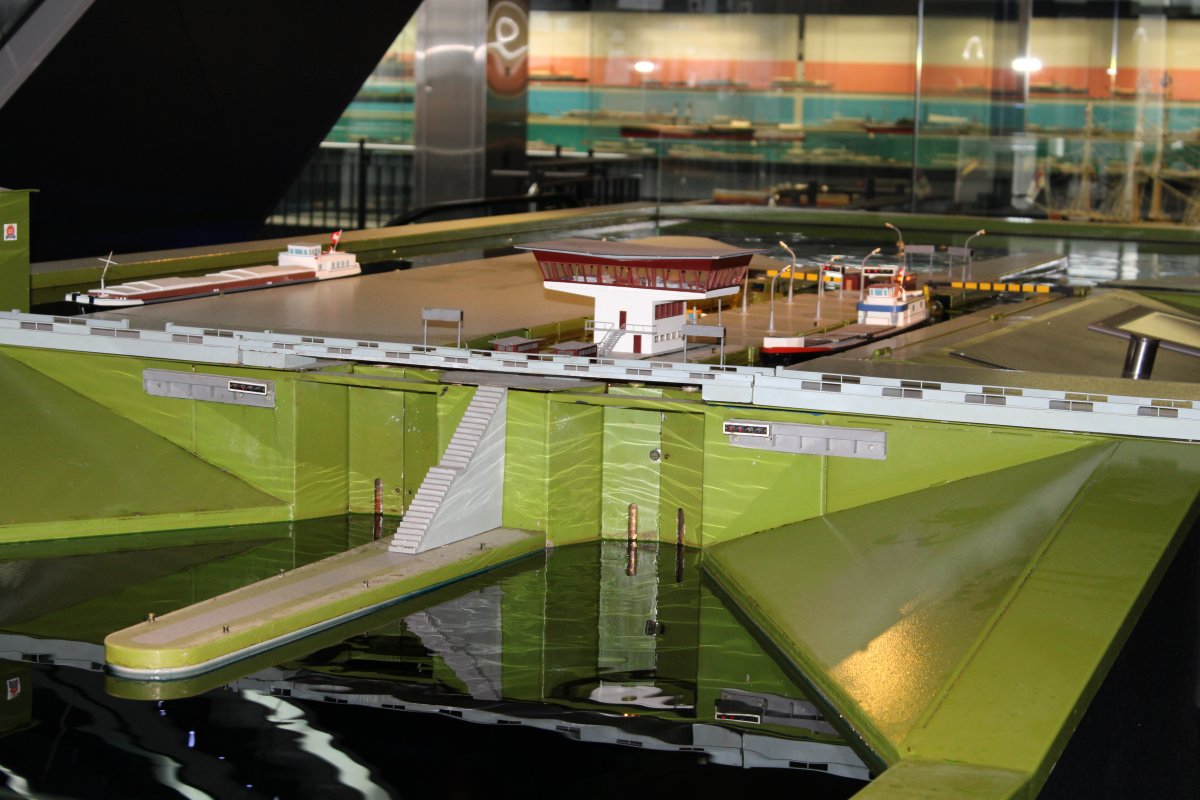 |
|
|
A model of a quanry next to the river, complete with dock and ship to load.
|
| |
 |
|
| Model of Switzerland's main port -- Basel -- where we had disembarked on our Rhine River cruise. |
| |
 |
|
|
Hard to see, but this is a model of a "push tug", a common type on the Rhine (and the Mississippi). It is more effective and efficient to have separate cargo (lighter) and propulsion (push tug) on the river.
|
| |
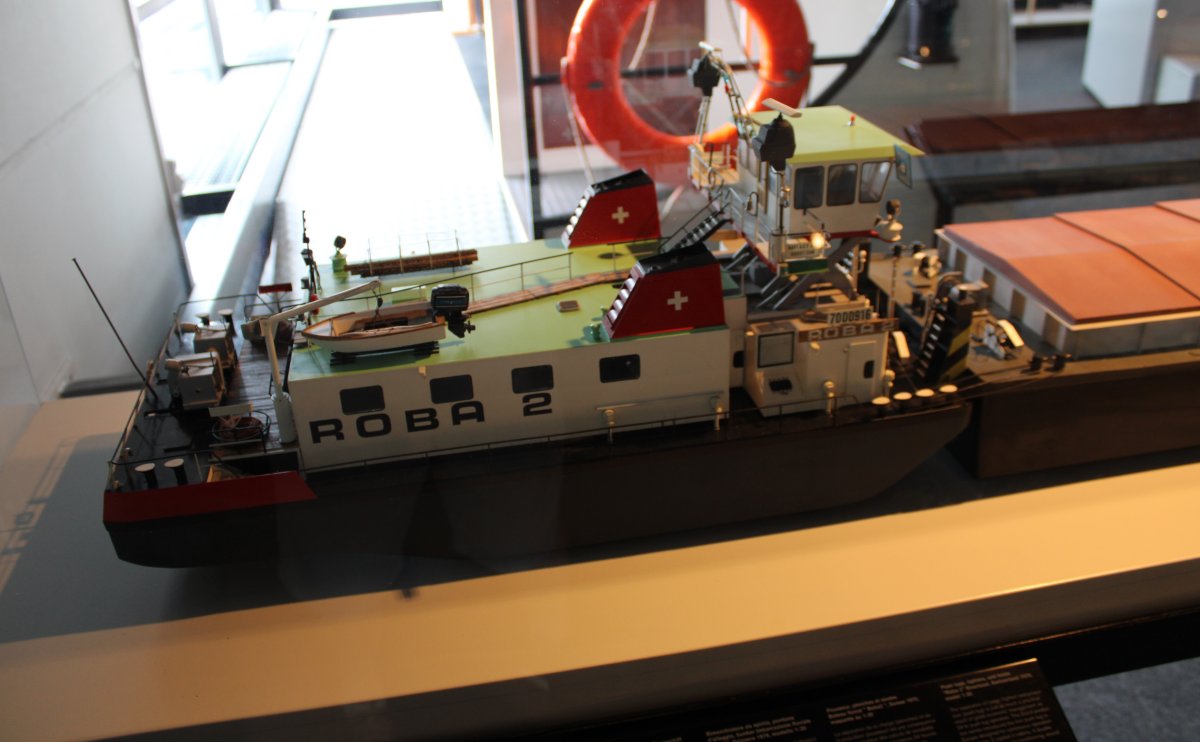 |
|
| This is the "Swissarena". It's a giant up-to-date aerial photograph of Switzerland. You walk over it wearing slippers. |
| |
 |
|
| Looking down at the Convair 990. |
| |
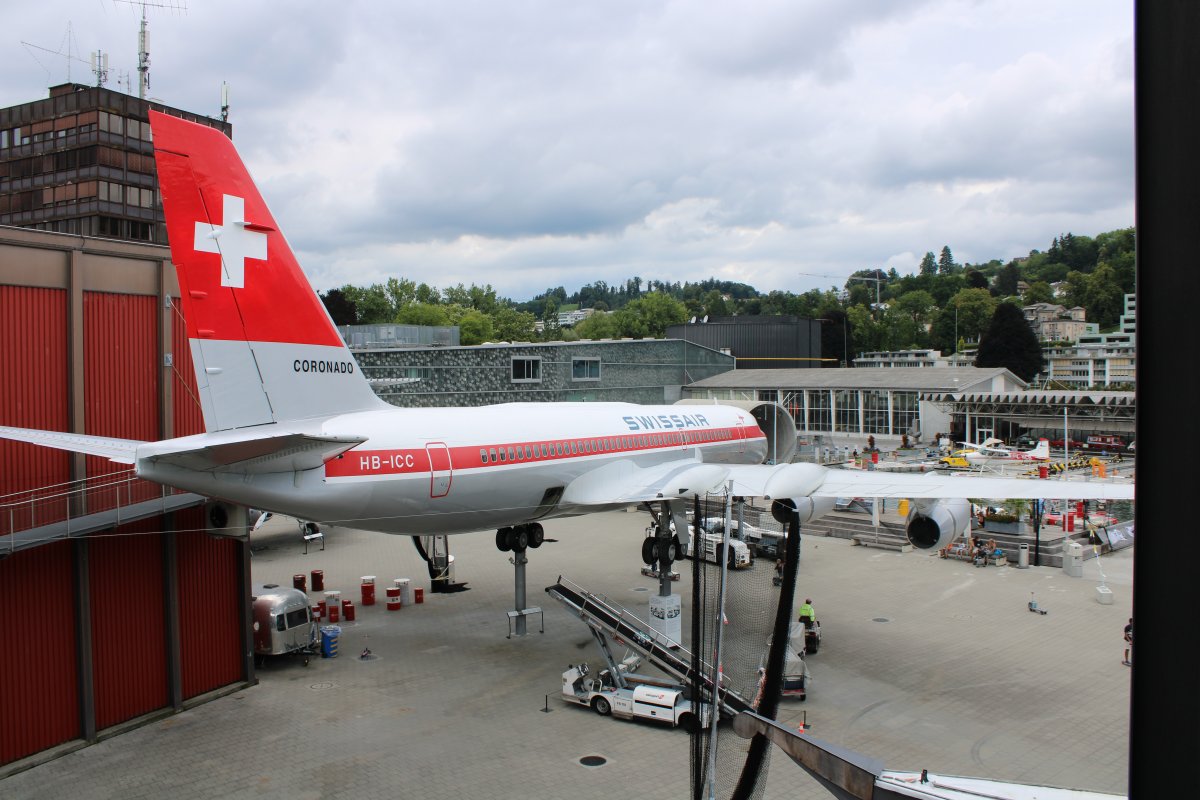 |
|
| Our last stop was in the airplane hall, which turned out to be a very good aviation museum. |
| |
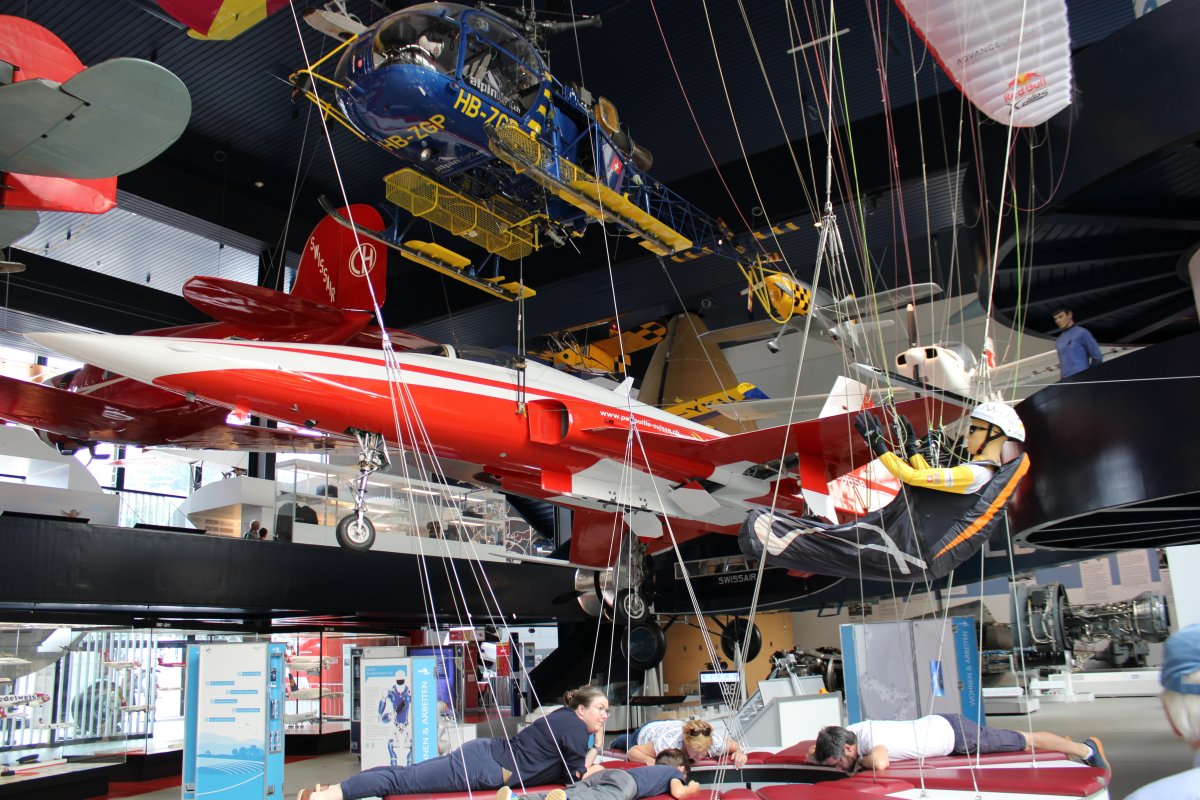 |
|
|
Lynnette having fun on the parasailing simulator. She's looking down at the moving countryside below.
|
| |
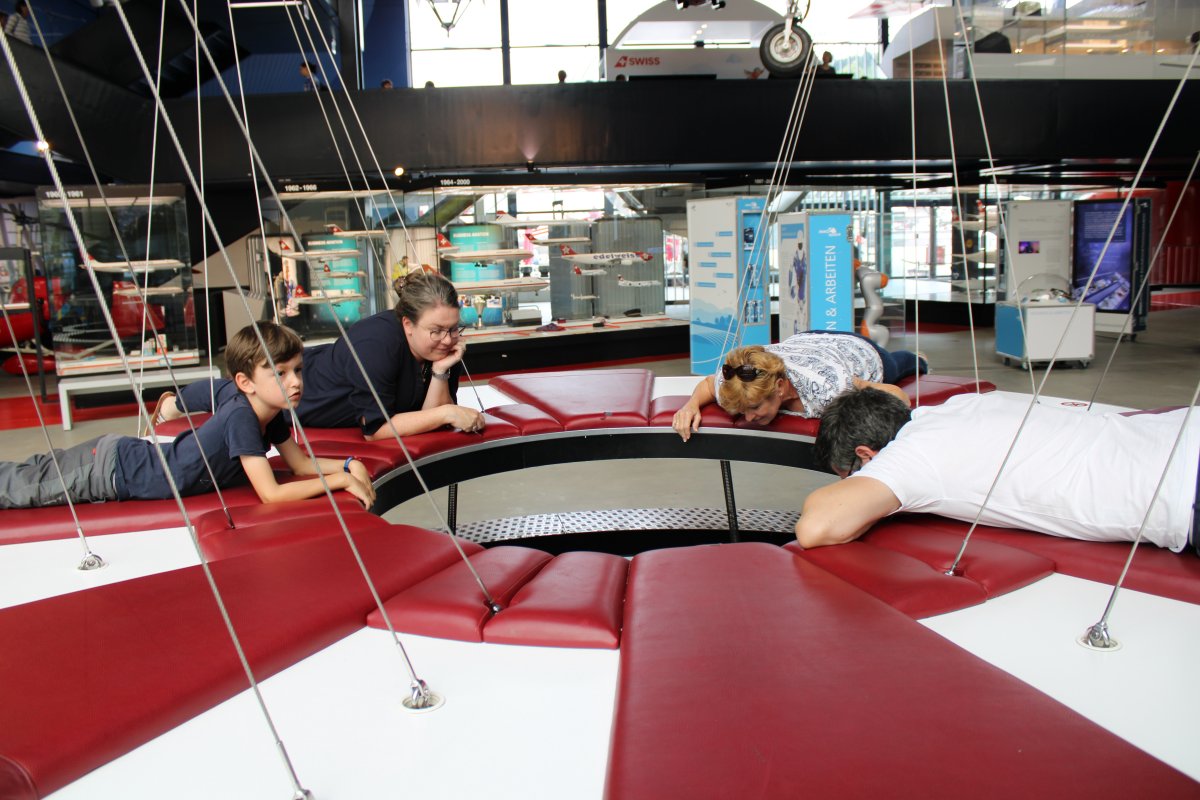 |
|
| A Pilatus bushplane above, and a Fiesler Storch short takeoff and landing (STOL) plane -- known mainly for its use by the Germans in WWII but also used by the Swiss. |
| |
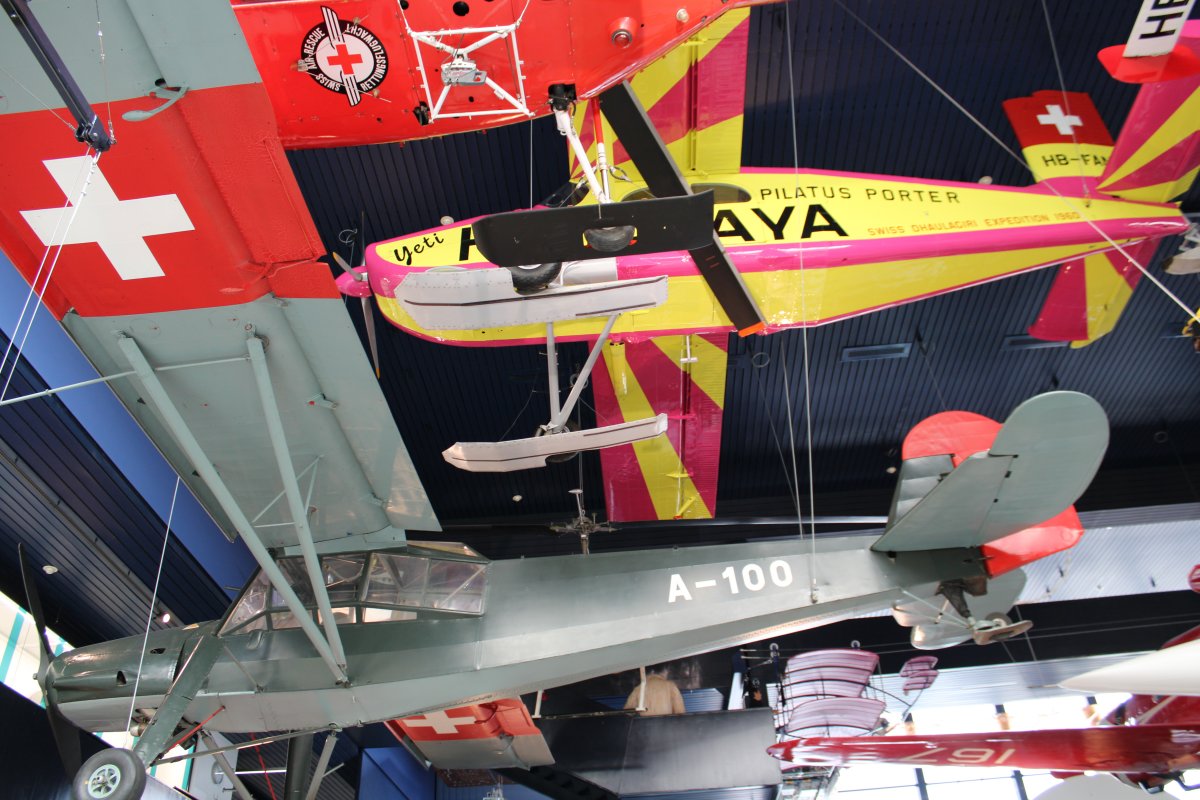 |
|
|
There was a column of display cases containing all the aircraft flown in Switzerland from the newest to oldest.
This case includes the giant A380 which entered service in 2007. But Airbus has lost money on each one produced and is discontinuing production by 2021. As of May, 2020, here are 228 aircraft in service with 14 operators. I remember when it was a relatively new airplane; I toured the inside of one at AirVenture 2009.
The four engine jet at top left is probably the A340.
|
| |
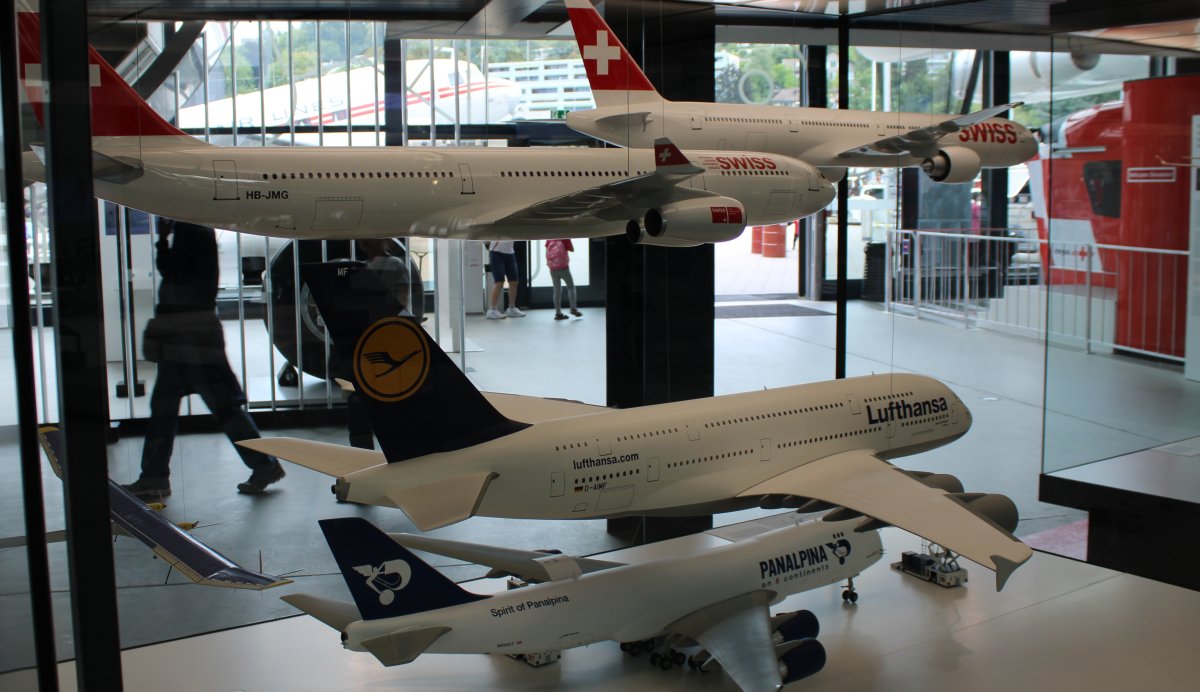 |
|
| The next case includes the Concorde, DC-10 annd 707. |
| |
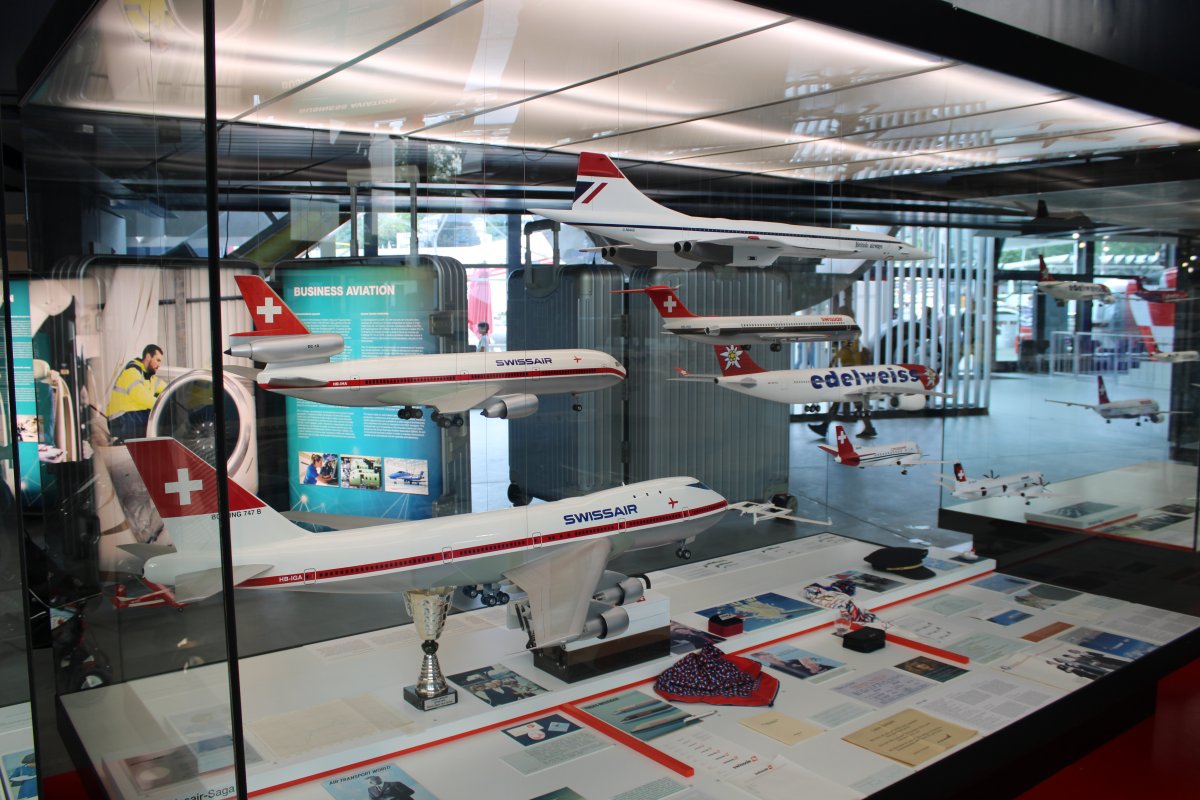 |
|
| The last case showed aircraft from 1903-1911. Of course, I immediately wondered "where is the Wright Flyer?" I was prepared to be outraged, but then I saw .... |
| |
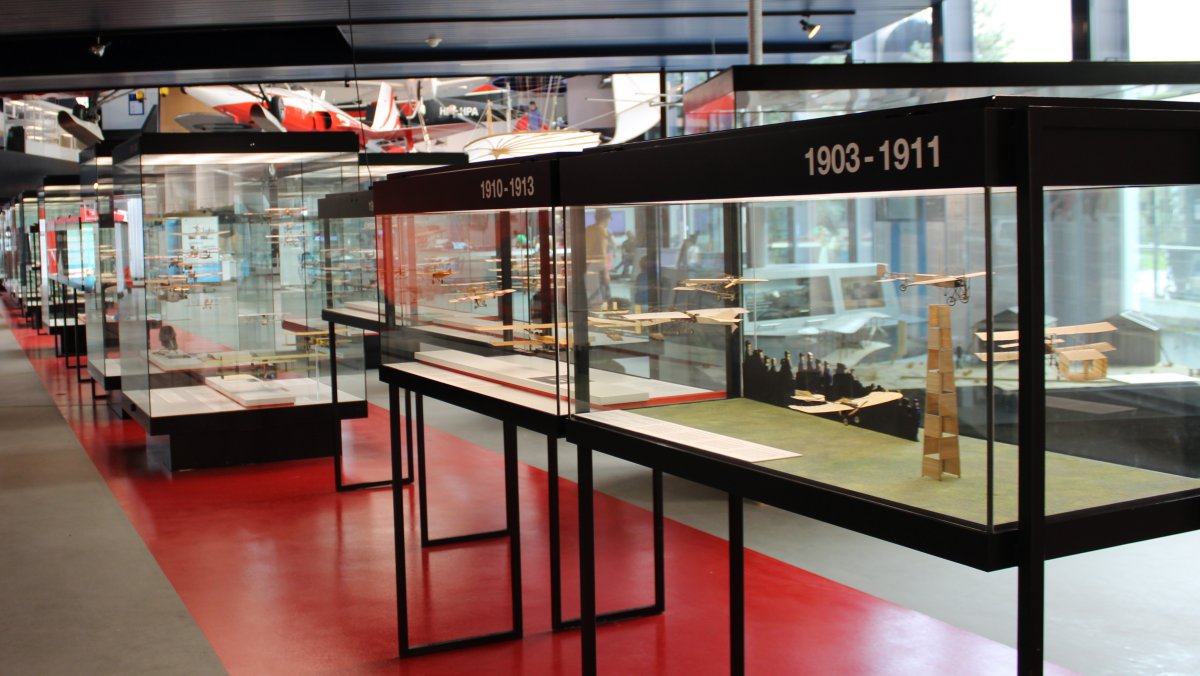 |
|
| ... this nearby display case dedicated to the first flight on December 17, 1903. OK, I'm good! |
| |
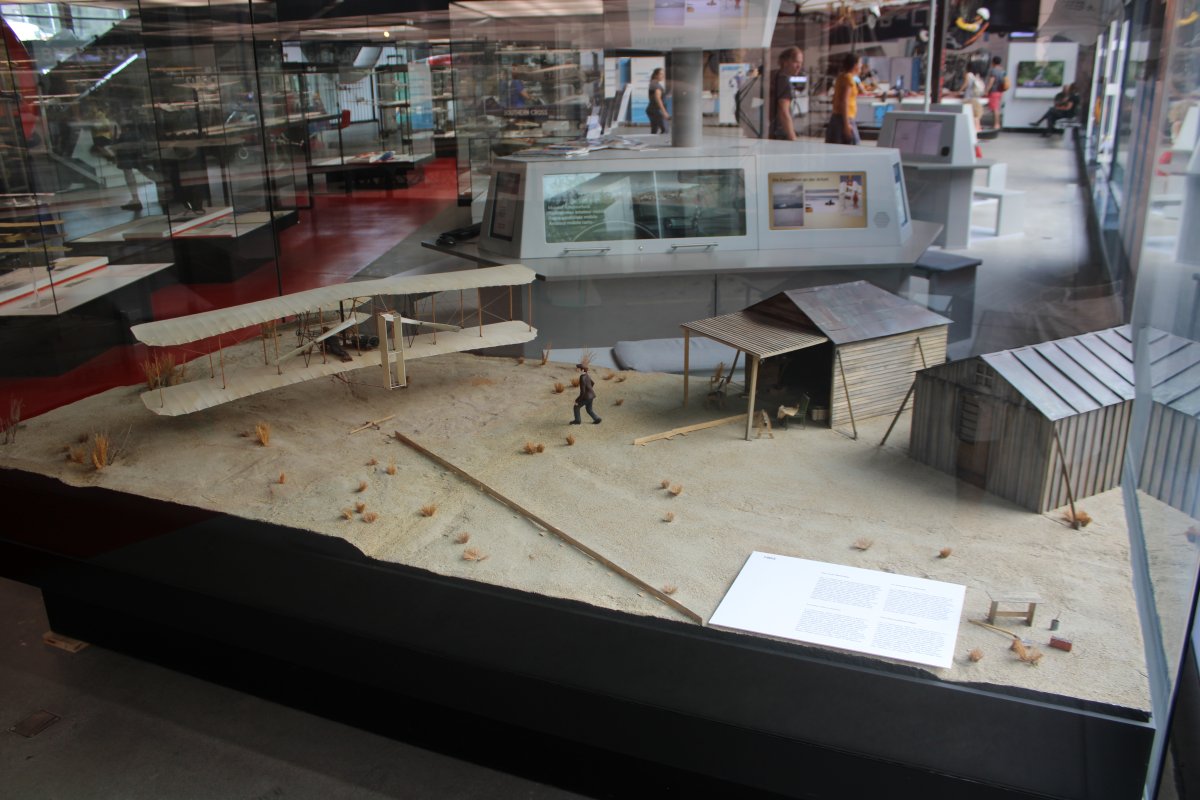 |
|
A replica of the Otto Lilienthal glider. Lilienthal was a German pioneer of aviation who became known as the "flying man". He was the first person to make well-documented, repeated, successful flights with gliders. Otto and his brother Gustav made more than 2,000 glider flights. Starting his flying experiments in 1891, he eventually was able to achieve flight distances as long as 820 feet. On 9 August 1896, his glider stalled and he was unable to regain control. Falling from about 50 feet, he broke his neck and died the next day.
Lilienthal's research was well known to the Wright brothers, and they credited him as a major inspiration for their decision to pursue manned flight. However, they abandoned his aeronautical data after two seasons of gliding and began using their own wind tunnel data.
|
| |
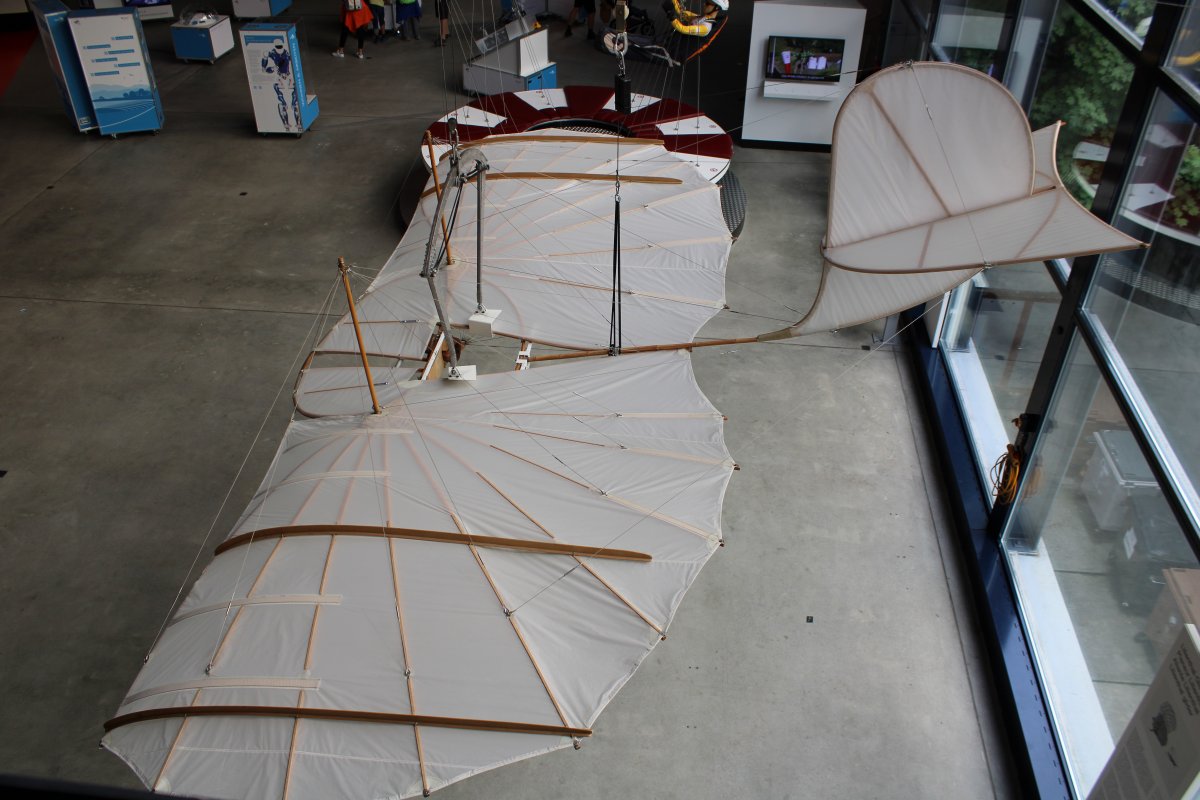 |
|
|
A Defaux 4. Designed by the Genevan brothers Henri and Armond Defaux, the Defaux 4 successfully flew over Lake Geneva in August 1910. An improved version, the Defaux 5, was bought by the Swiss Army and was the beginning of Swiss military aviation.
|
| |
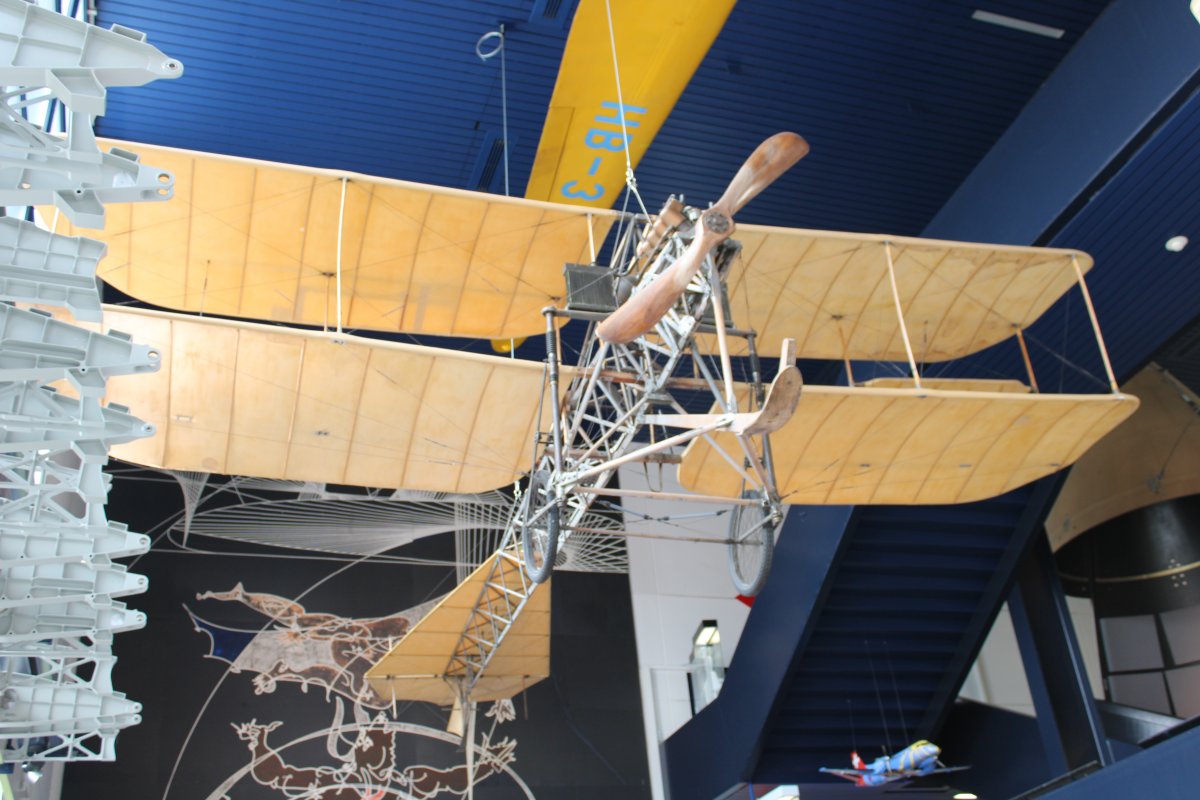 |
|
| Front end of a Fokker F-VIIa. Anthony Fokker is recognized as one of the top fighter plane designers of World War I, which included such fighters as the DR-1 Triplane and the D-7. After the war he designed passenger airplanes. This F-VIIa design was his greatest success. It could carry eight passengers comfortable and for a long distance. It was first produced in 1924 and served into the 1930s. |
| |
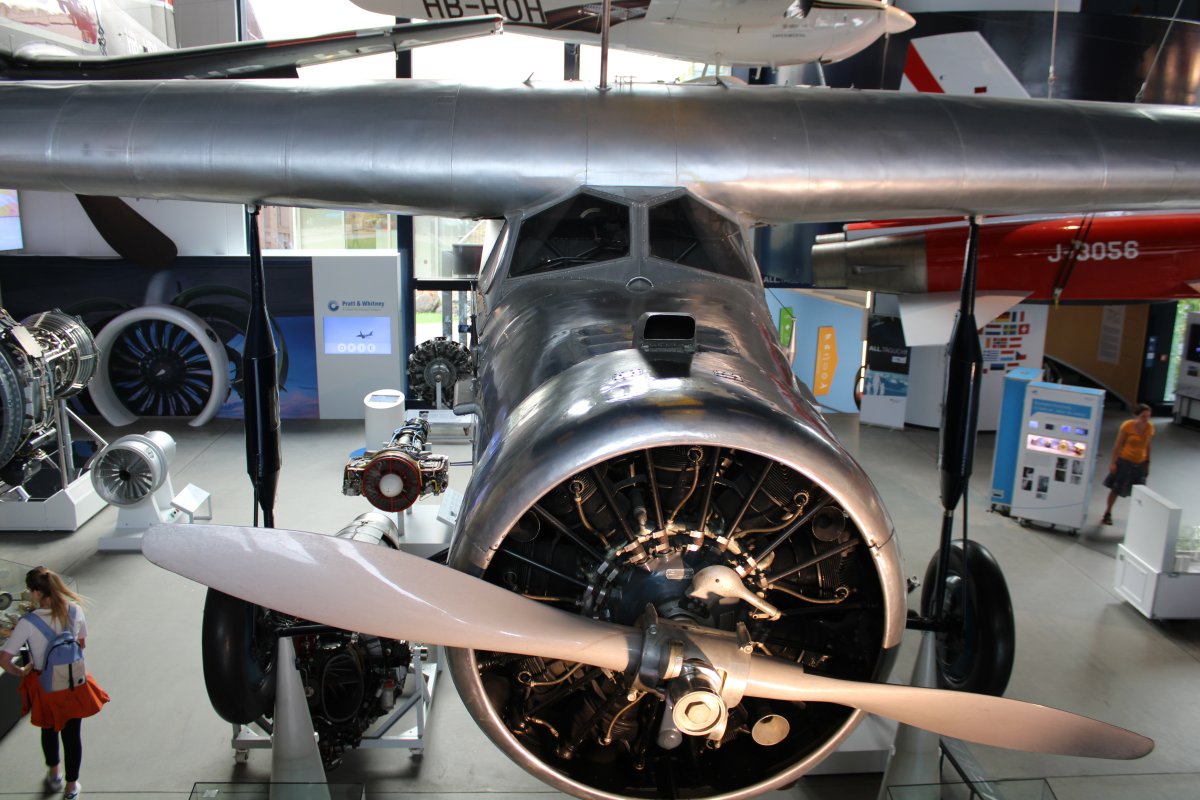 |
|
| A good side view of the Fokker VIIa. The classic looking and elegant F.VIIa was considered one of the most luxurious airliners of its era, able to seat up to 10 passengers with an unprecedented level of comfort. In a later version, an engine was hung from each wing and the aircraft became popularly known as the Fokker Trimotor. |
| |
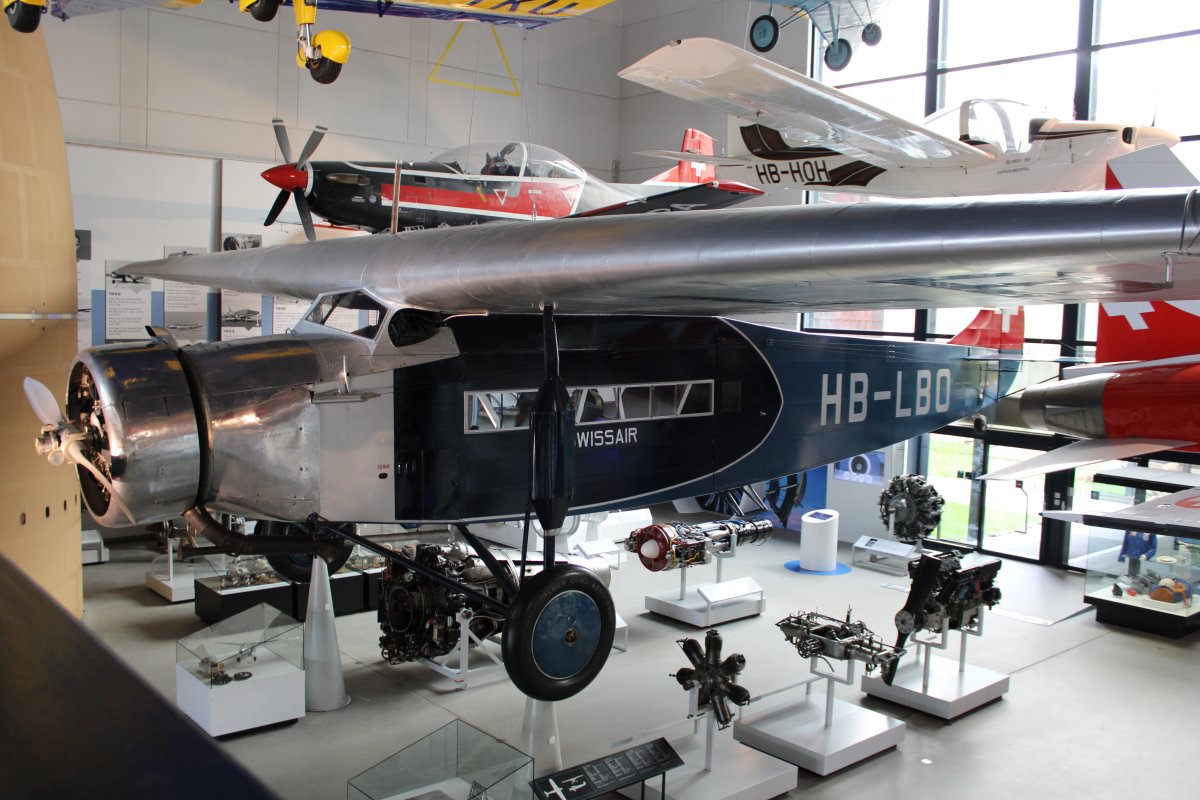 |
|
When it entered service, this Lockheed 9C Orion was the fastest commercial aircraft of its time and the only one with a retractable undercarriage. Swissair was the only airline in Europe to use this unique six-passenger aircraft—the ‘Roter Hund’, or Red Hound, as it was nicknamed due to its distinctive all red livery and speed, entered service in May 1932 on the prestigious Zürich–Munich–Vienna express route.
This particular aircraft has a very interesting history. It is the only surviving example of its kind anywhere, out of 35 Orions built between 1931 and 1934. Jimmy Doolittle made hundreds of flgiths in this very airplane in the 1930s, and the aircraft was very much in evidence at air shows, airport dedications, and business meetings across the United States. The airplane was just sitting out in the open at John Wayne Airport in Orange County, CA in the 1960s when Swissair bought it, had it restored, and donated it to the Swiss Transport Museum.
|
| |
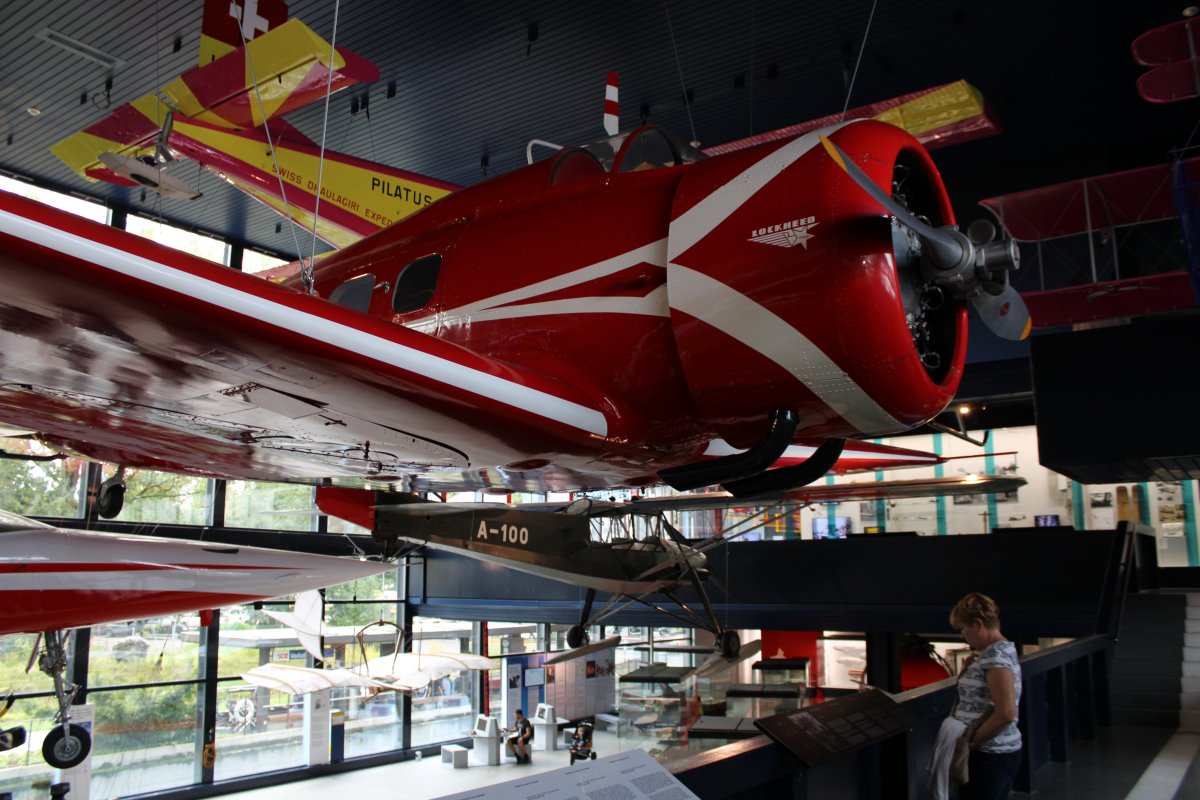 |
|
|
Switzerland has an air force and they flew F-5 Tigers from 1978 to 2018. Here is a colorful F-5E Tiger II with the paint scheme of their aerobatics team Patrouille Suisse.
I was surprised to learn the Swiss Air Force also flies F/A-18 Hornets, 34 of which were built under license between 1996 and 1999 in Emmen, Switzerland. The SAF also recently acquired Swedish SAAB Gripen New Generation fighters.
The Swiss protect their fighter jets by keeping them in mountain caverns.
|
| |
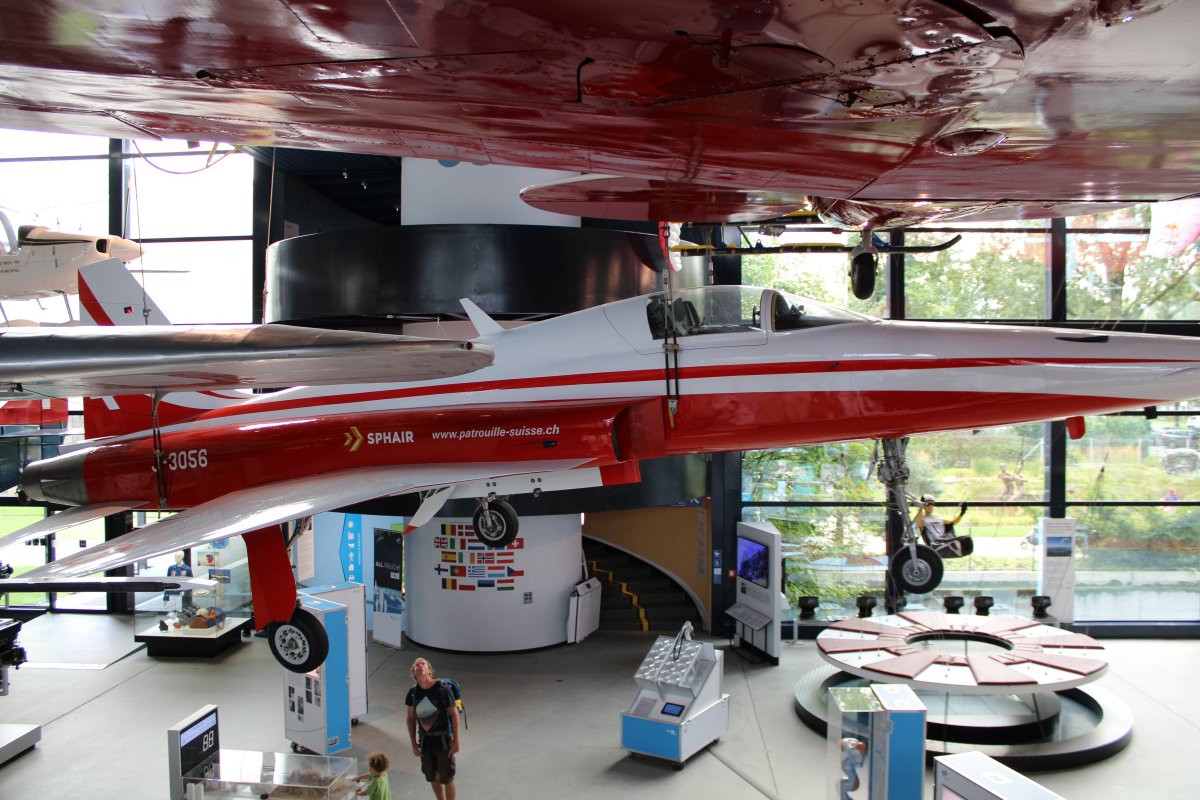 |
|
| Another view of the colorful F-5 Tiger. |
| |
 |
|
|
|
| |
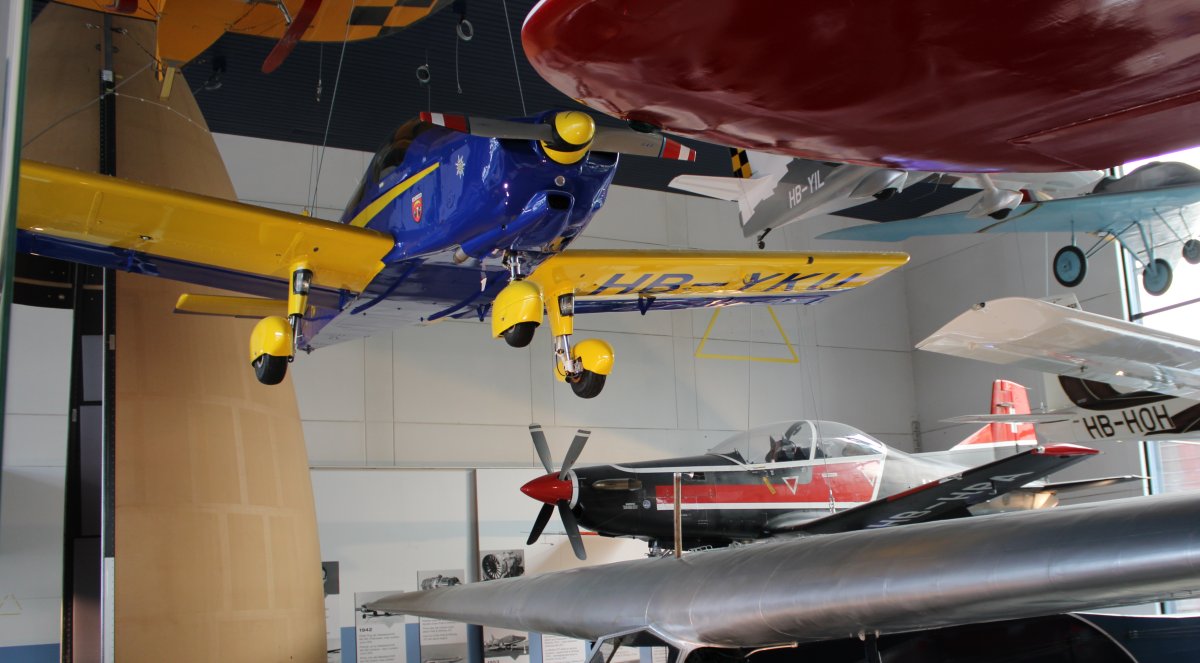 |
|
|
A Pilatus PC-6 Porter: a short takeoff and landing (STOL) light civil transport aircraft. Pilatus Aircraft Ltd. is an aerospace manufacturer located in Stans, Switzerland.
This particular aircraft was built in 1962. When it came to the Transport Museum, it was painted in the the colors and the registration of the famous "Yeti" which was the first PC-6 built, and was involved in the March 1960 Swiss expedition that made the first ascent of Dhaulagiri in the Himalayan mountains.
|
| |
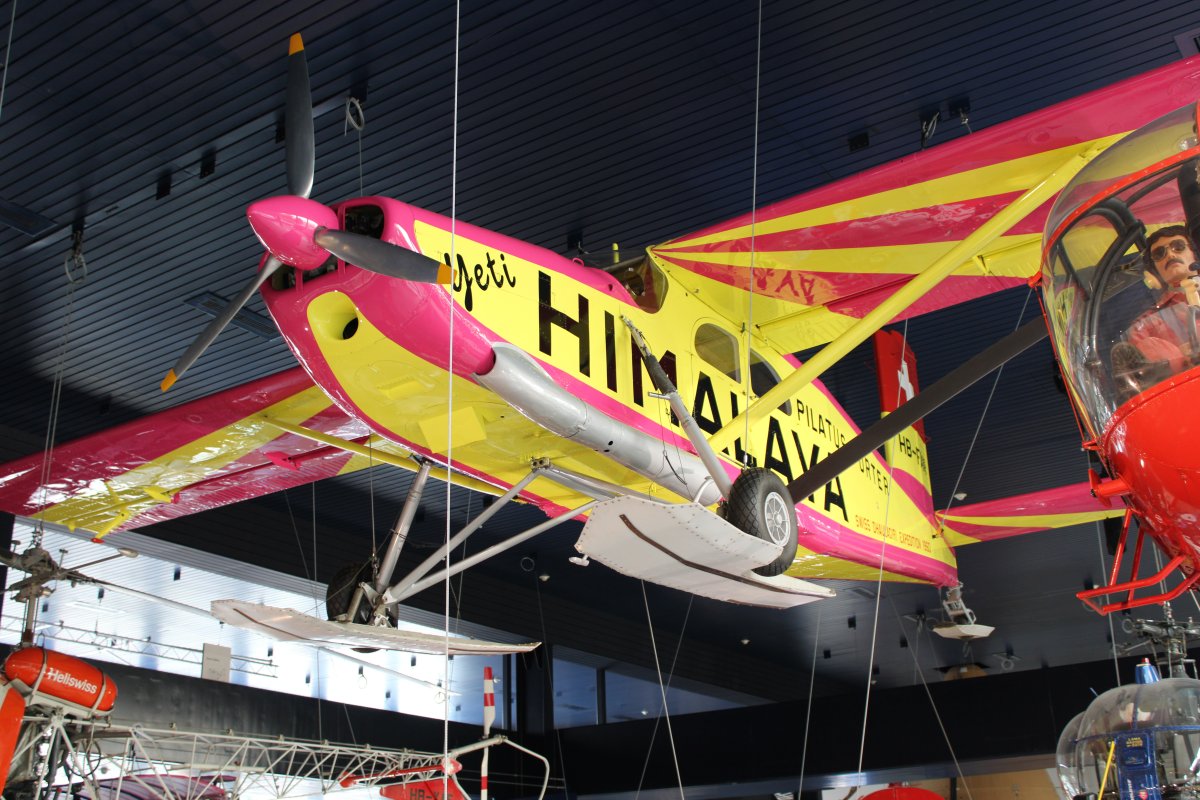 |
|
|
A Fieseler Storch, the famous German short take-off and landing (STOL) plane used in World War II for liaison, observation and many other things. This particular aircraft was flown into Switzerland at the end of the war and then used by the Swiss Air Force. In November 1946, two Storks landed on the Gauli Glacier in the Bernese Oberland to rescue survivors of an American military plane crash. This marked the birth of air rescue in the Swiss Alps.
|
| |
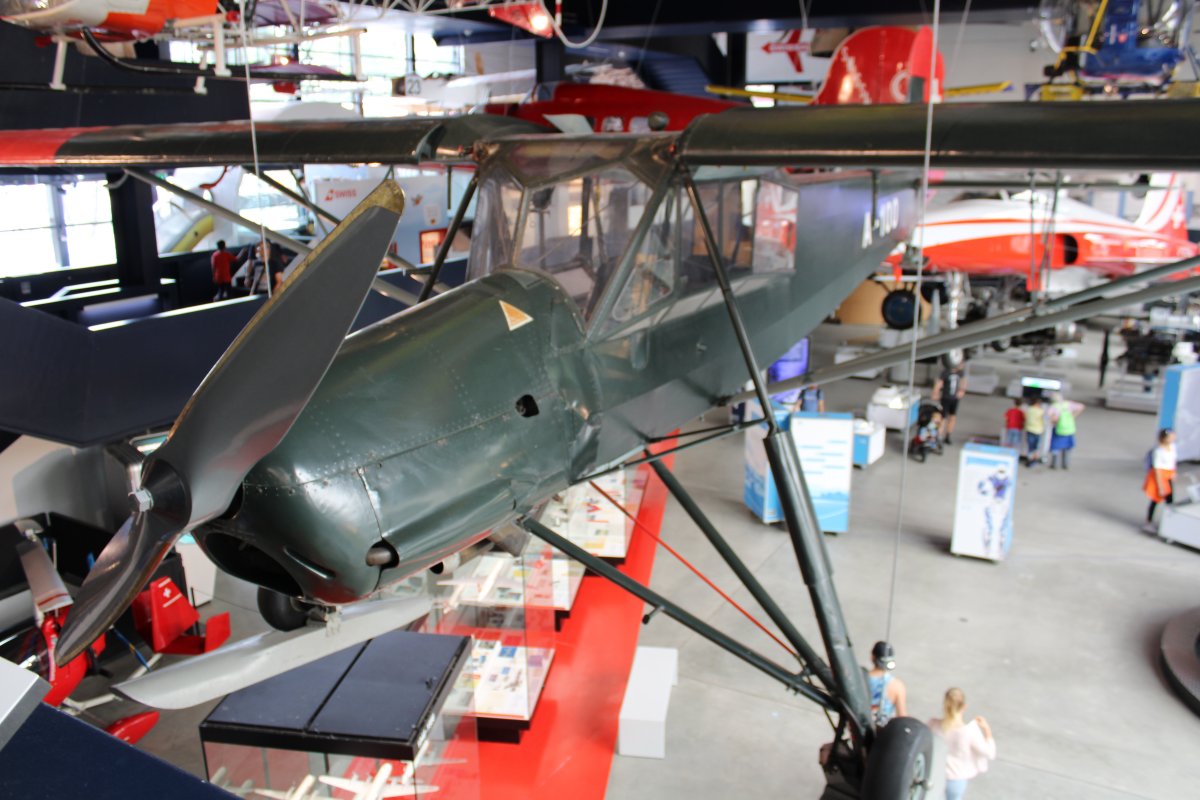 |
|
| We left the Transport Musem and walked back to Lucerne along the tree-lined waterfront promenade along the lake. It's a nice pathway built during the tourism boom in the 19th century, when this part of the bay was filled in and fancy resort hotels went up. |
| |
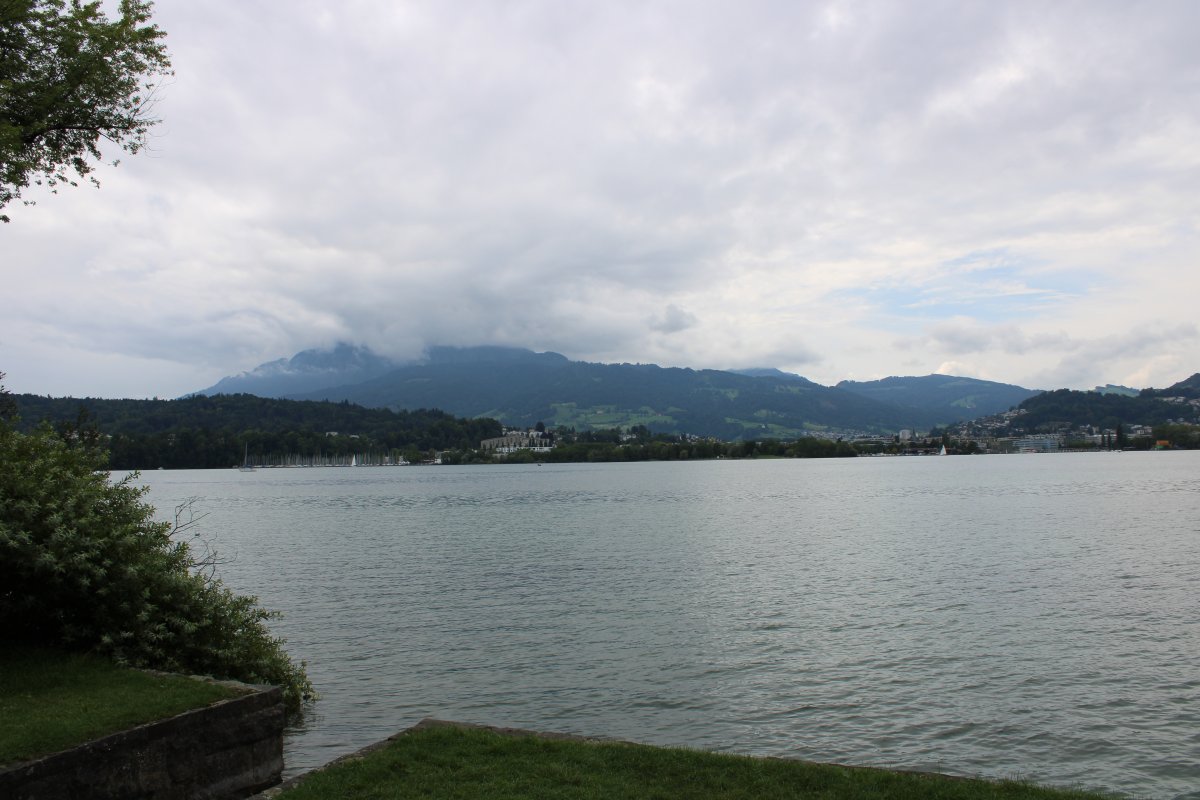 |
|
|
We passed by some pretty gardens.
|
| |
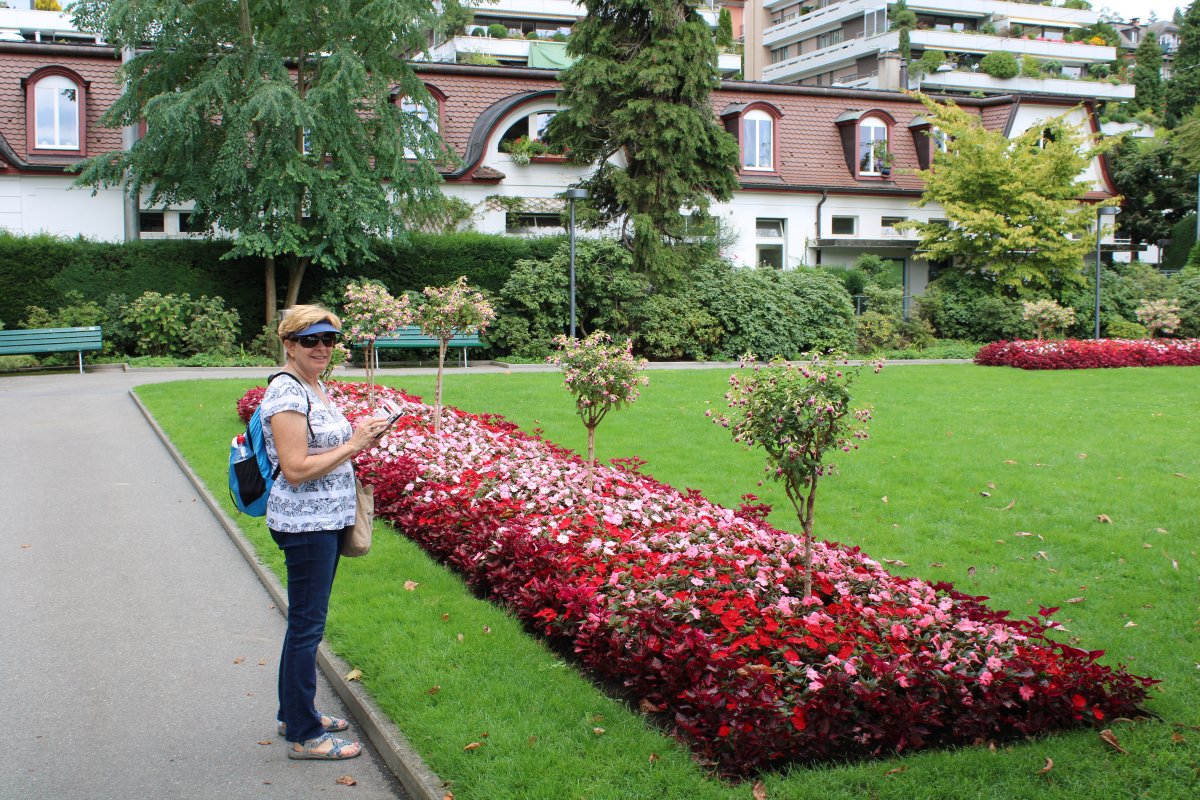 |
|
| We had some time to kill so we stopped by the north part of old town called Lowenplatz where the Lion Monument is. This area was the 19th-century tourist center of Lucerne and is showing its age. This time we checked out the Glacier Garden. It has a bunch of stuff -- a museum, old chalet, hall of mirrors -- but they were all closed for renovation so all we could see was the flagship exhibit which was a bunch of holes in the granite rock caused by glaciers. |
| |
 |
|
|
Wowee!
|
| |
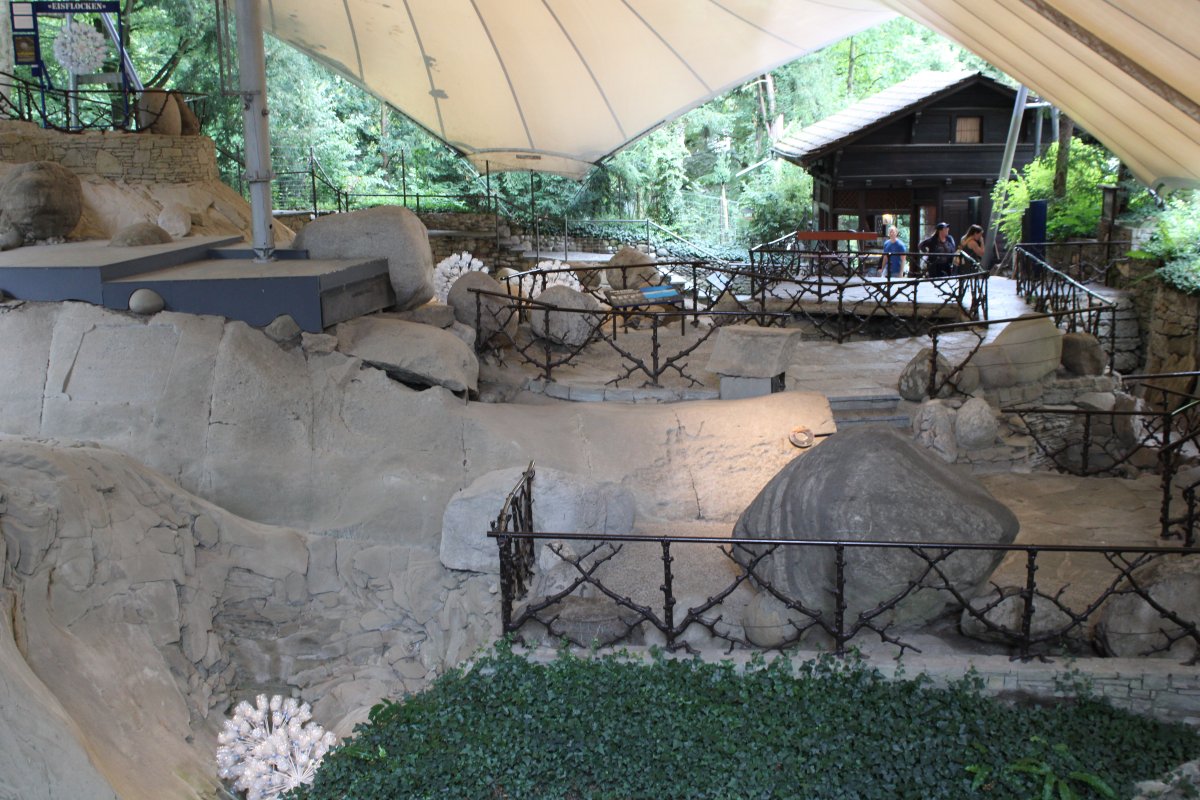 |
|
| An old chalet. |
| |
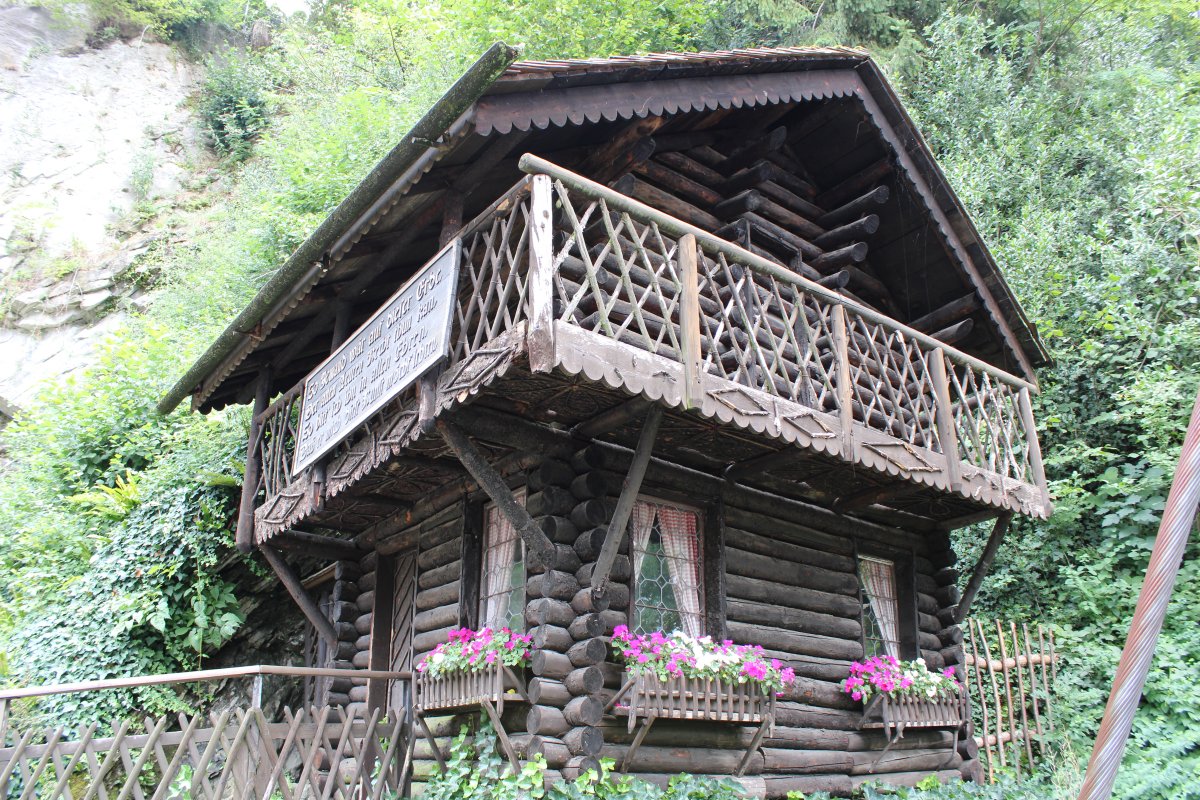 |
|
|
We also checked out the Bourbaki Panorama, which is a 360-degree painting telling the story of an event of the 1870 Franco-Prussian War where a French army entered Switzerland and surrendered to the Swiss, not wanting to surrender to the Germans. A Red Cross volunteer who was actually there painted the panorama in 1881. The only other panorama I've ever seen is the one at Gettysburg.
We had one last look at the poor Lion and that was it. Our trip was over.
The next morning we got up early, our B&B host insisted on making us a big breakfast, we caught the commuter train to Lucerne, then caught the train to Zurich Airport. We were plenty early to catch our flight. But still, we were glad when we were finally at our gate. International flight is always stressful. During the long flight from Zurich to Philladelphia, I read a good book -- American Wolf -- from start to finish. At Philly, we waited a couple of hours to catch the short flight back to Baltimore. Finally we arrived home. Long day!
|
| |
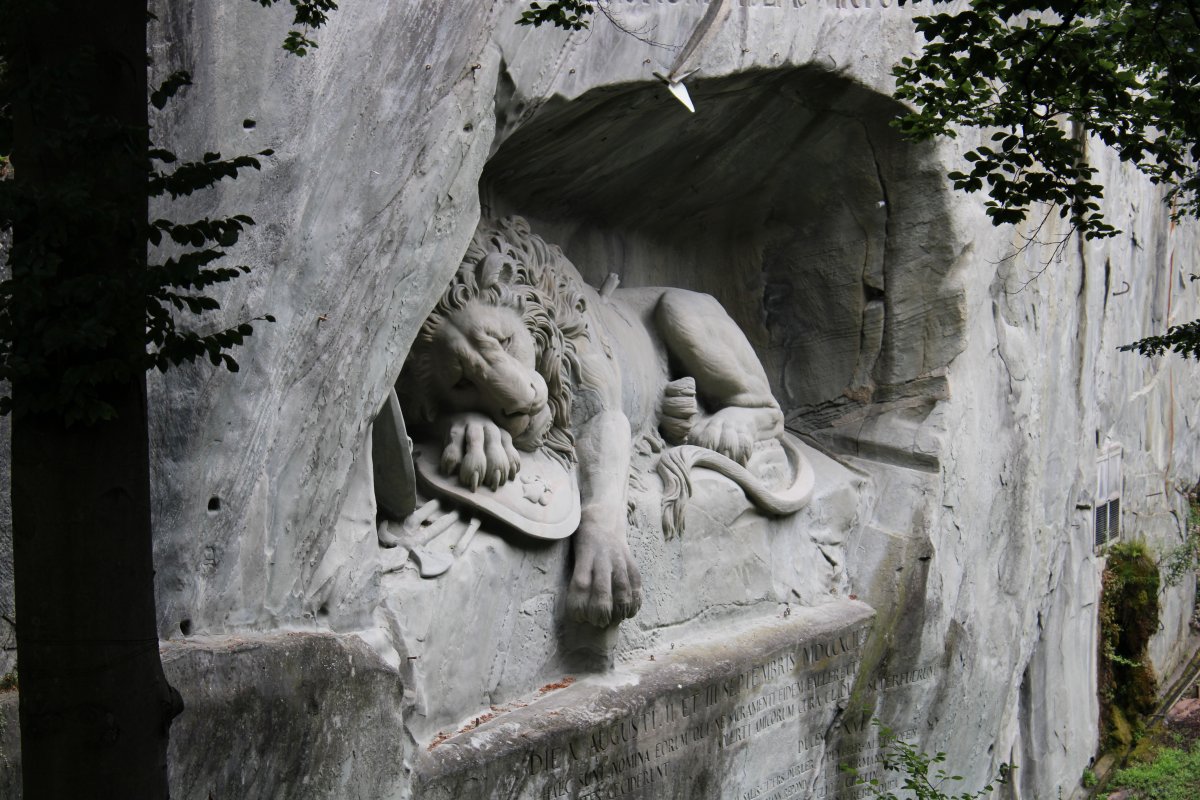 |
|
| |
| |
|
|
|
|
|
|





















































